The National Palace inside: history and rooms

The National Palace not only represents the most emblematic symbol of the Dominican State; within its halls and walls, it also preserves the memories of the events that have shaped the country's course for nearly eight decades.
Inaugurated on August 16, 1947, this building was built at an estimated cost of five million pesos at the time. It has a constructed area of 18,000 square meters , sitting on a 25,000 square meter lot.
Throughout its history, it has served as the setting for formal events , official ceremonies, and key decisions for the state administration. However, it has also hosted unusual events , such as the 15th birthday celebration of the daughter of the then Minister of Tourism, Francisco Javier García, or the recording of the music video "Baila Casanova," starring Mexican singer Paulina Rubio, in 2002.
The first stop on Diario Libre 's visit to these facilities offers an impressive impression: the tour begins in one of the most significant halls for the exercise of Executive Power, the Government Council Hall .
Government Council Hall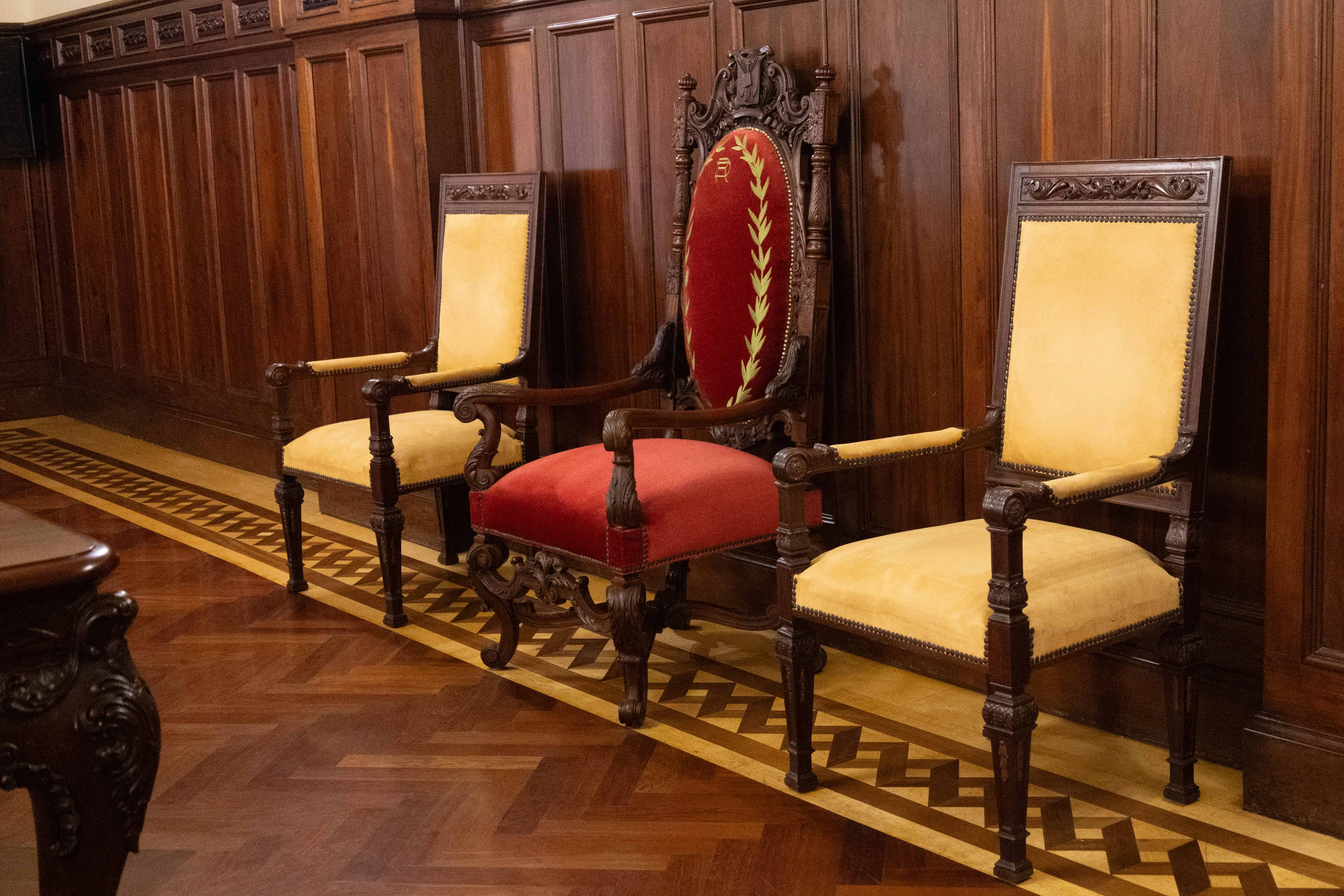
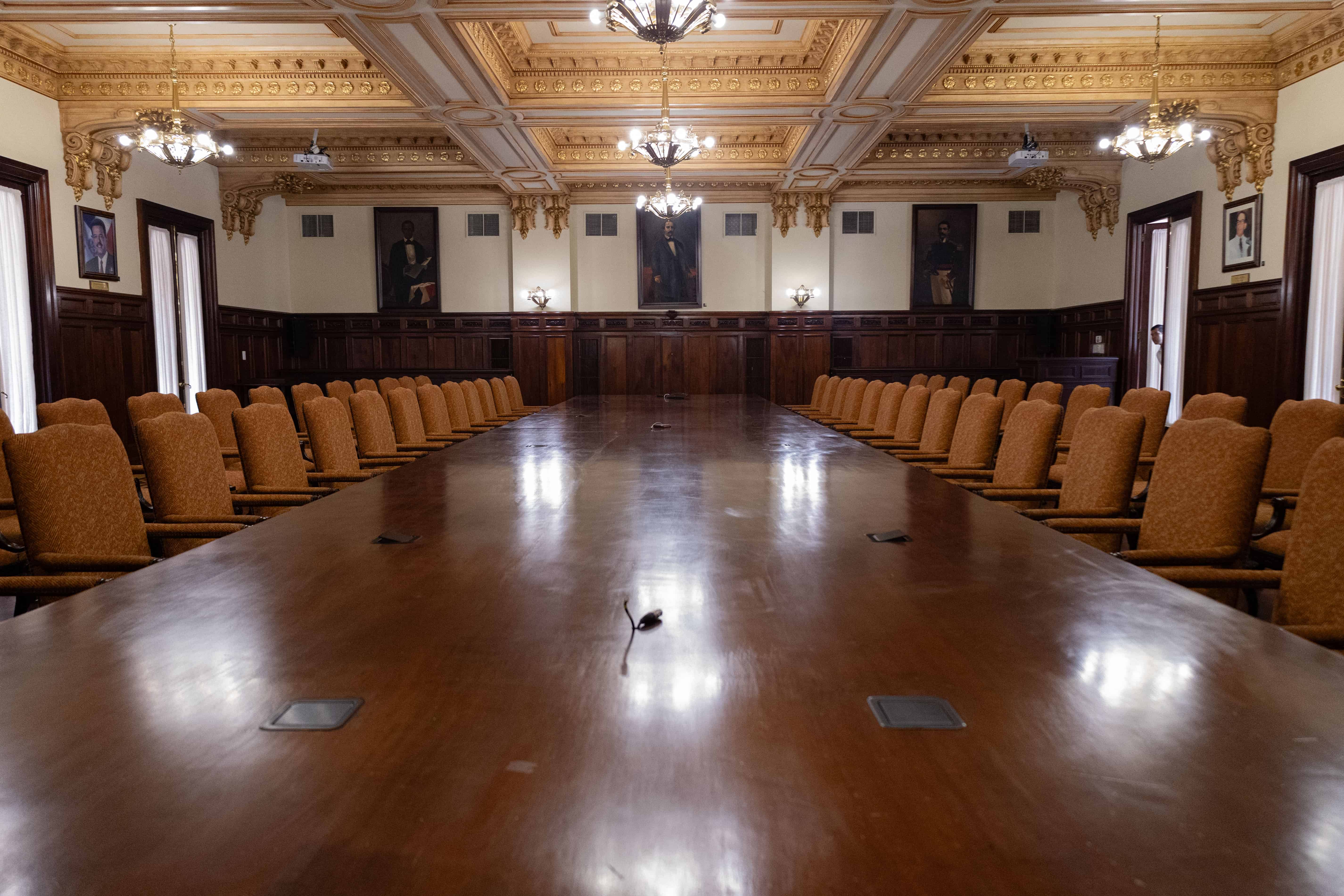
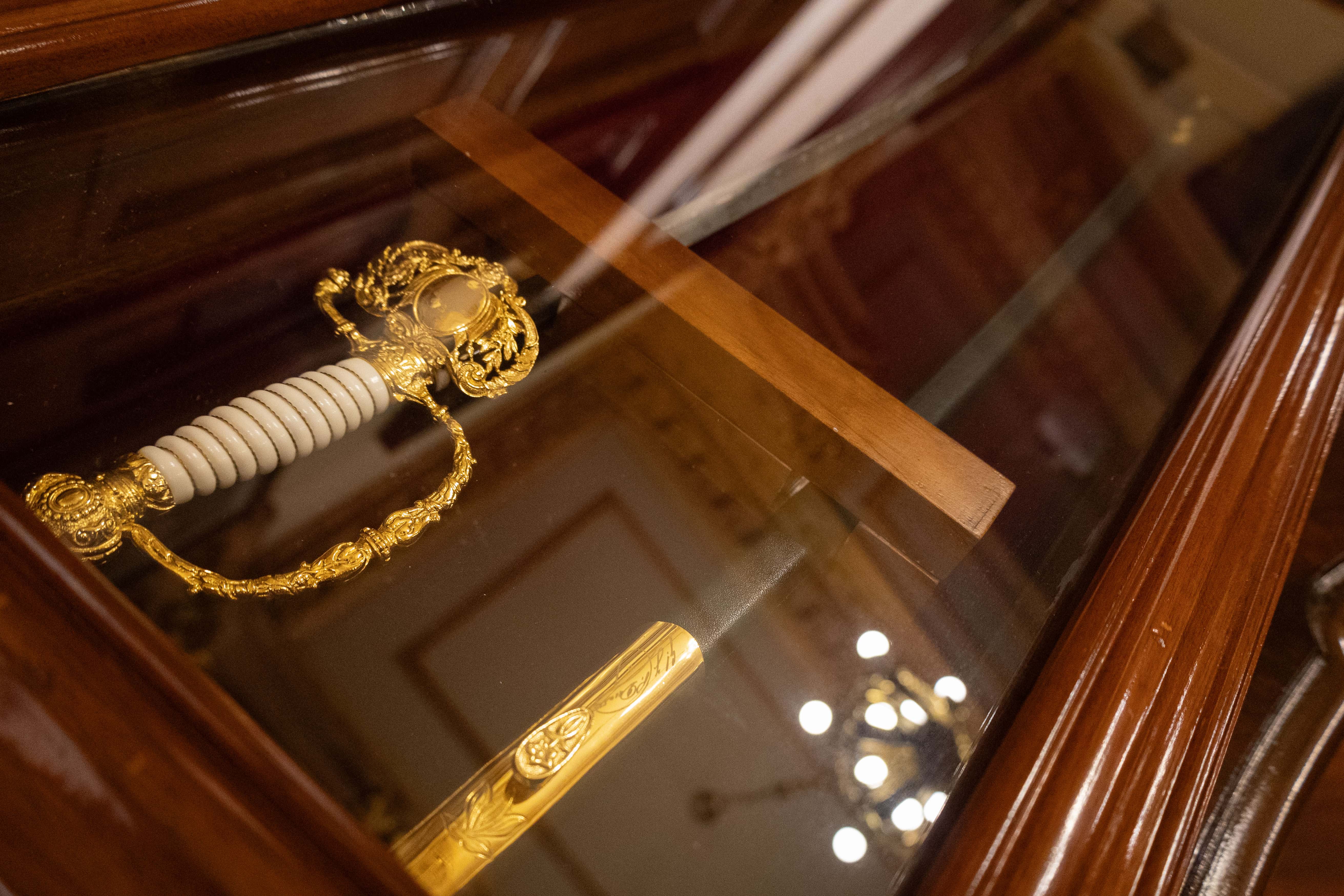
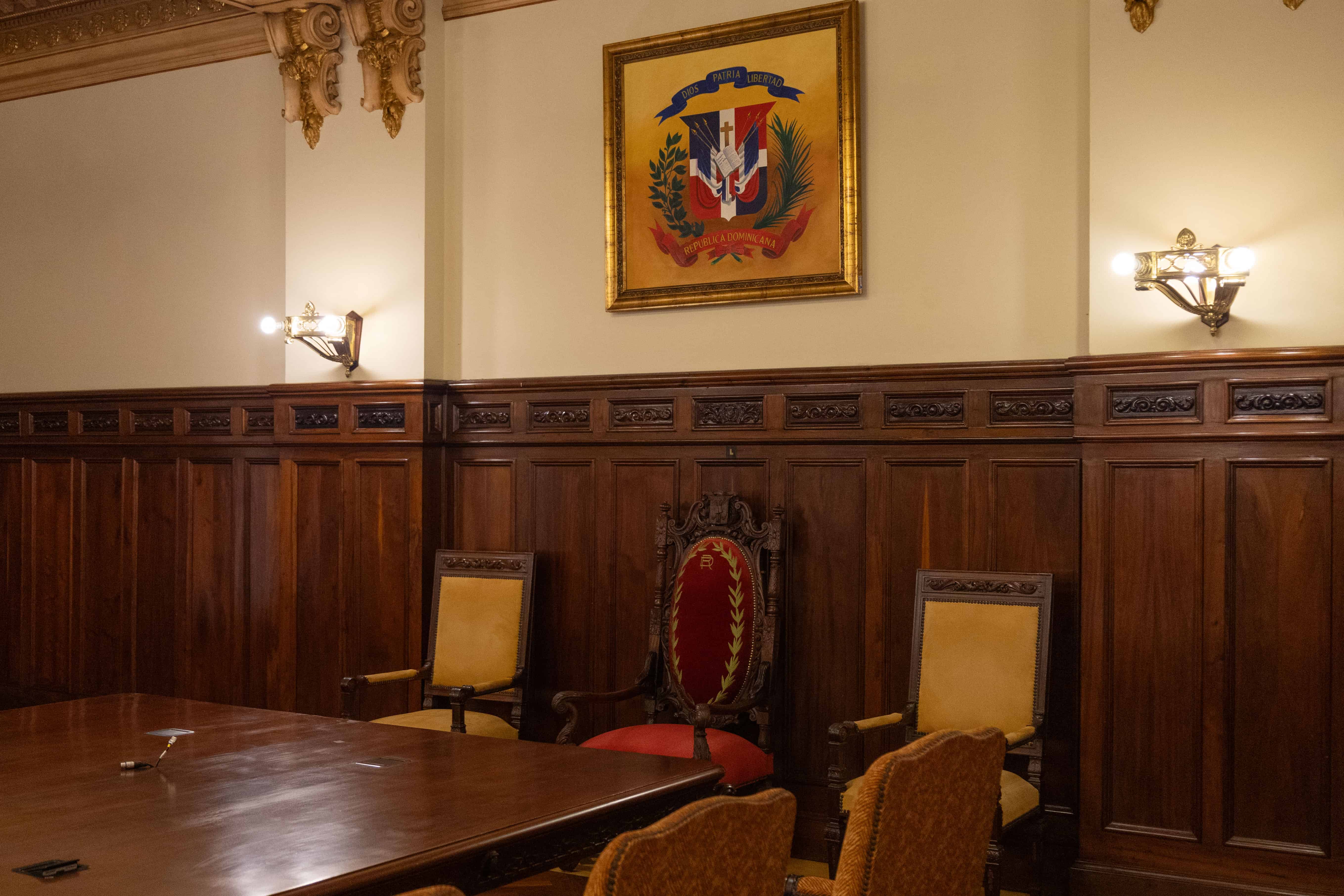
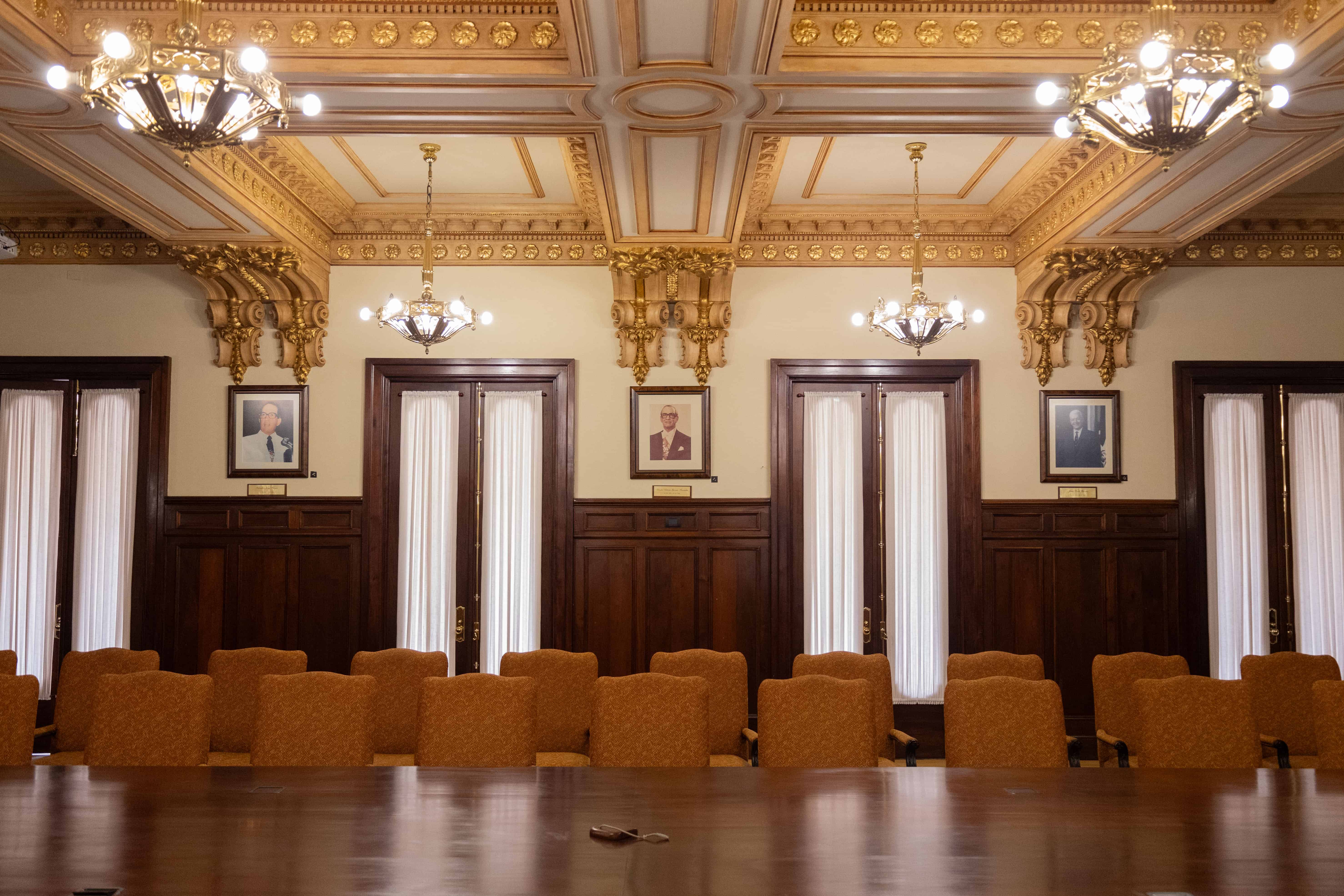
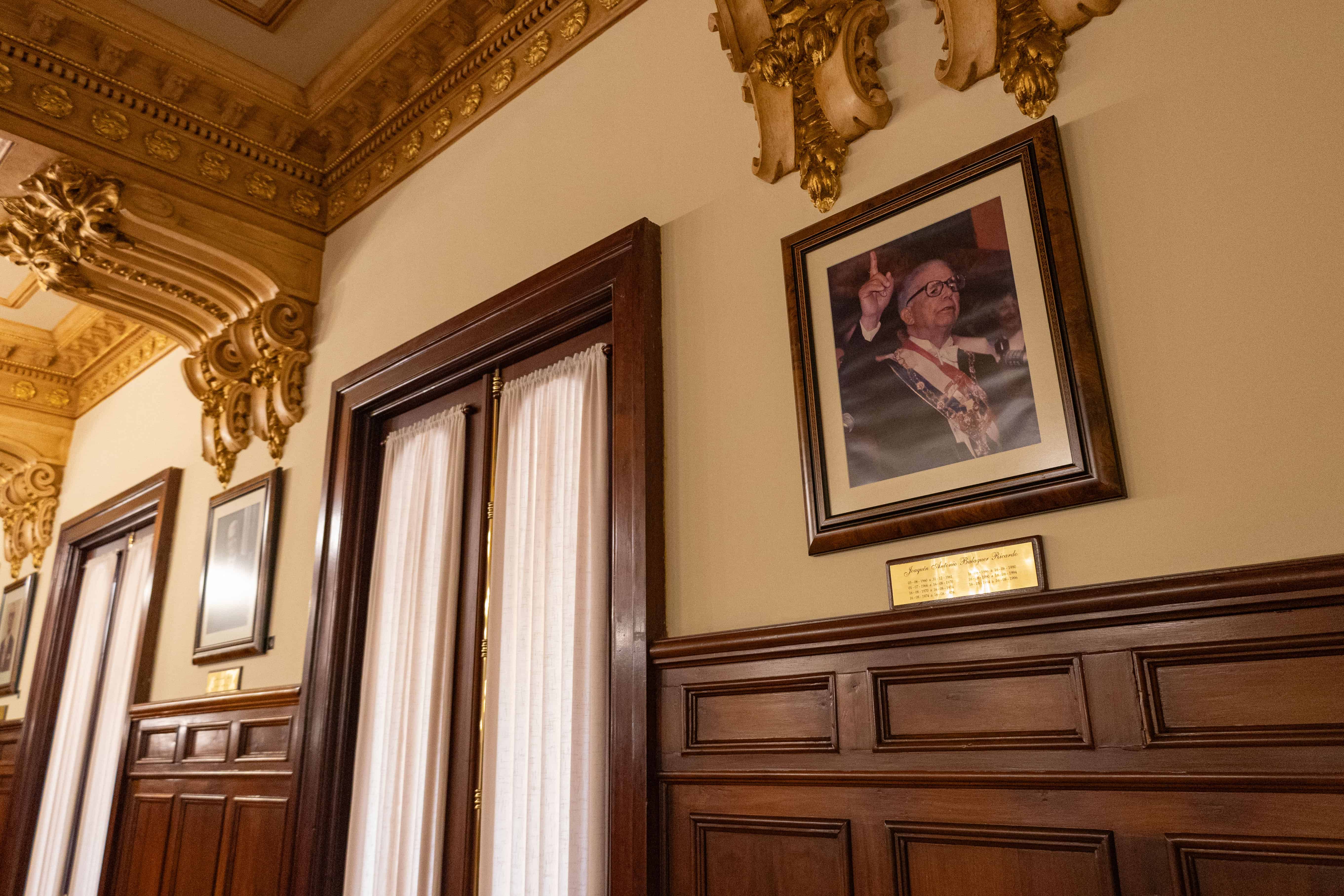
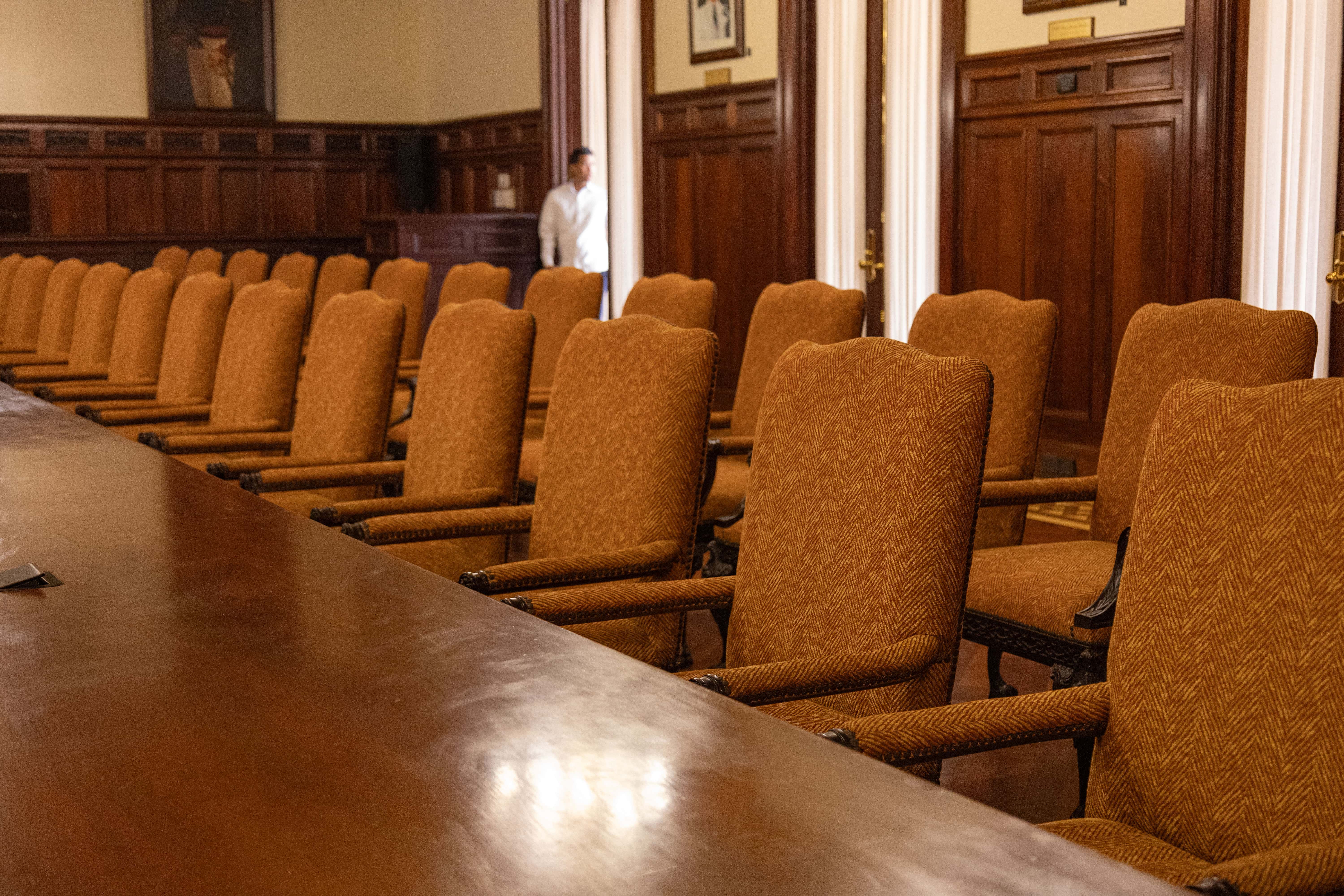
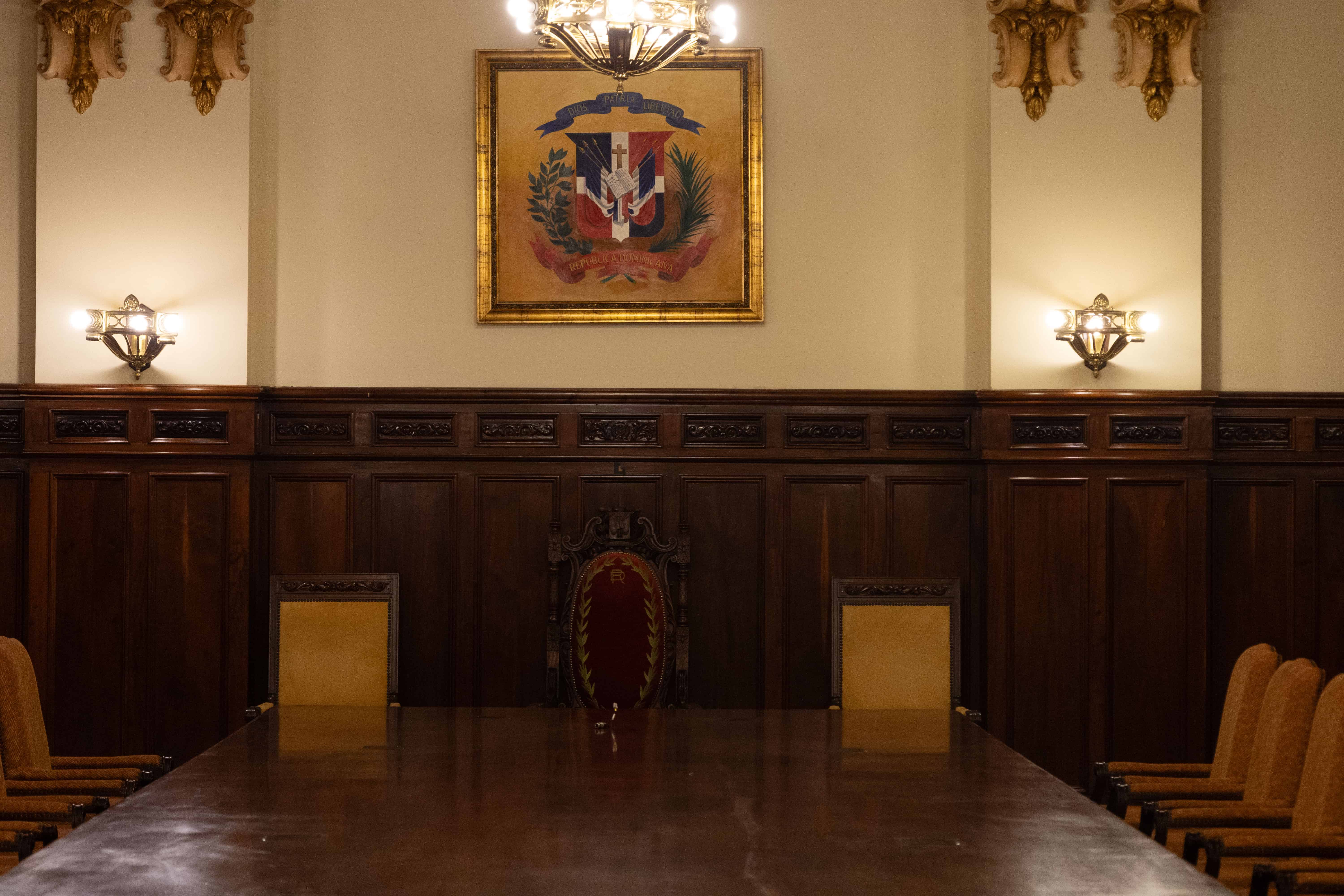
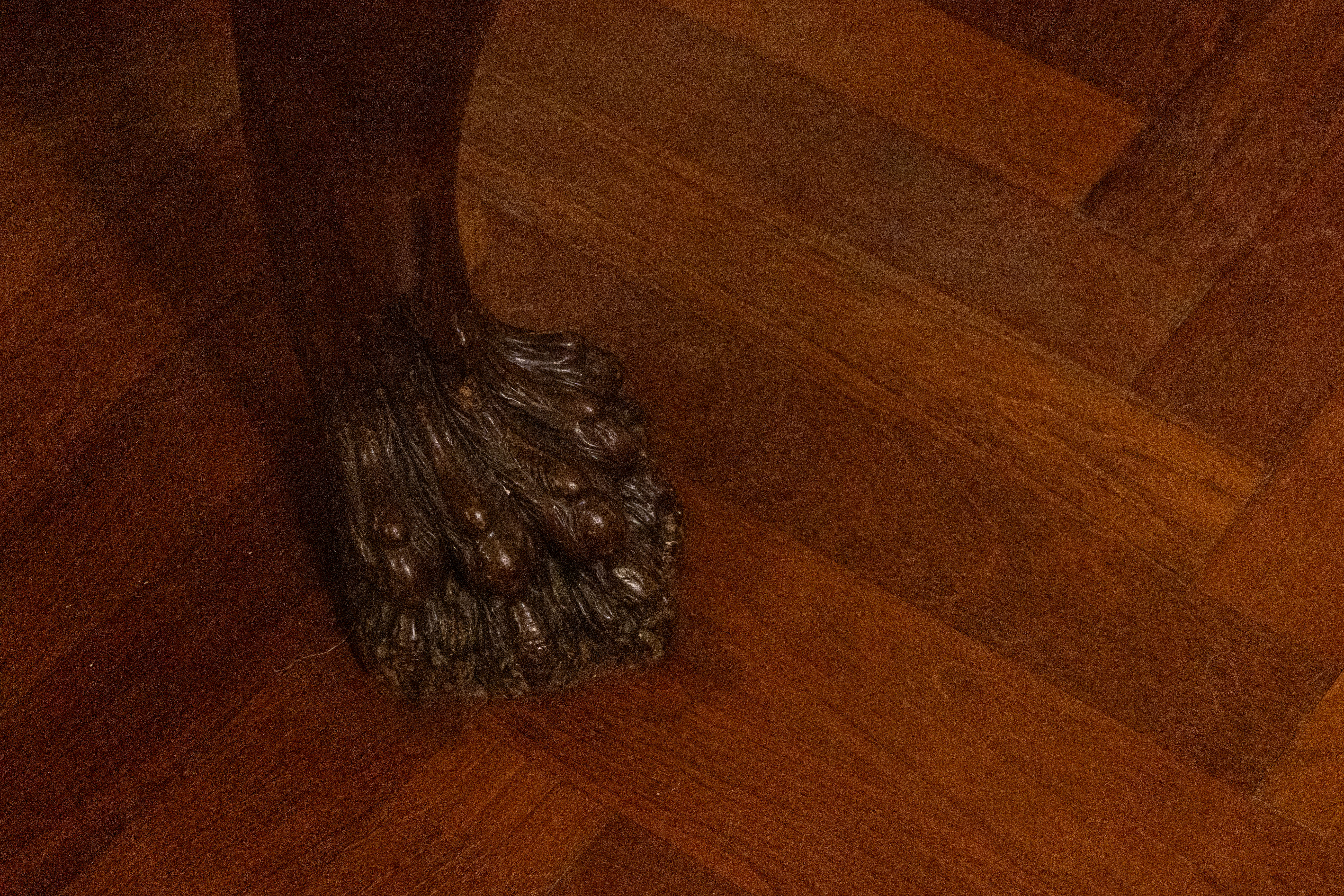
Located on the second level, it is where the president meets with the Council of Ministers to make decisions on issues of collective interest or analyze the administration's public policies .
This room features a large center table made of polished precious wood and rows of dark orange upholstered chairs on either side. The table is so large that it had to be assembled in the room itself.
The ceiling displays delicate relief decoration in gold and cream tones, while the walls are decorated with images of presidents from Juan Bosch to Danilo Medina.
The Government House consists of three levels . The first houses the general services facilities; the second, in addition to the Governing Council Chamber , houses the offices of the President , Vice President, and other officials, as well as the next level: the entrance and main lobby.
Main entrance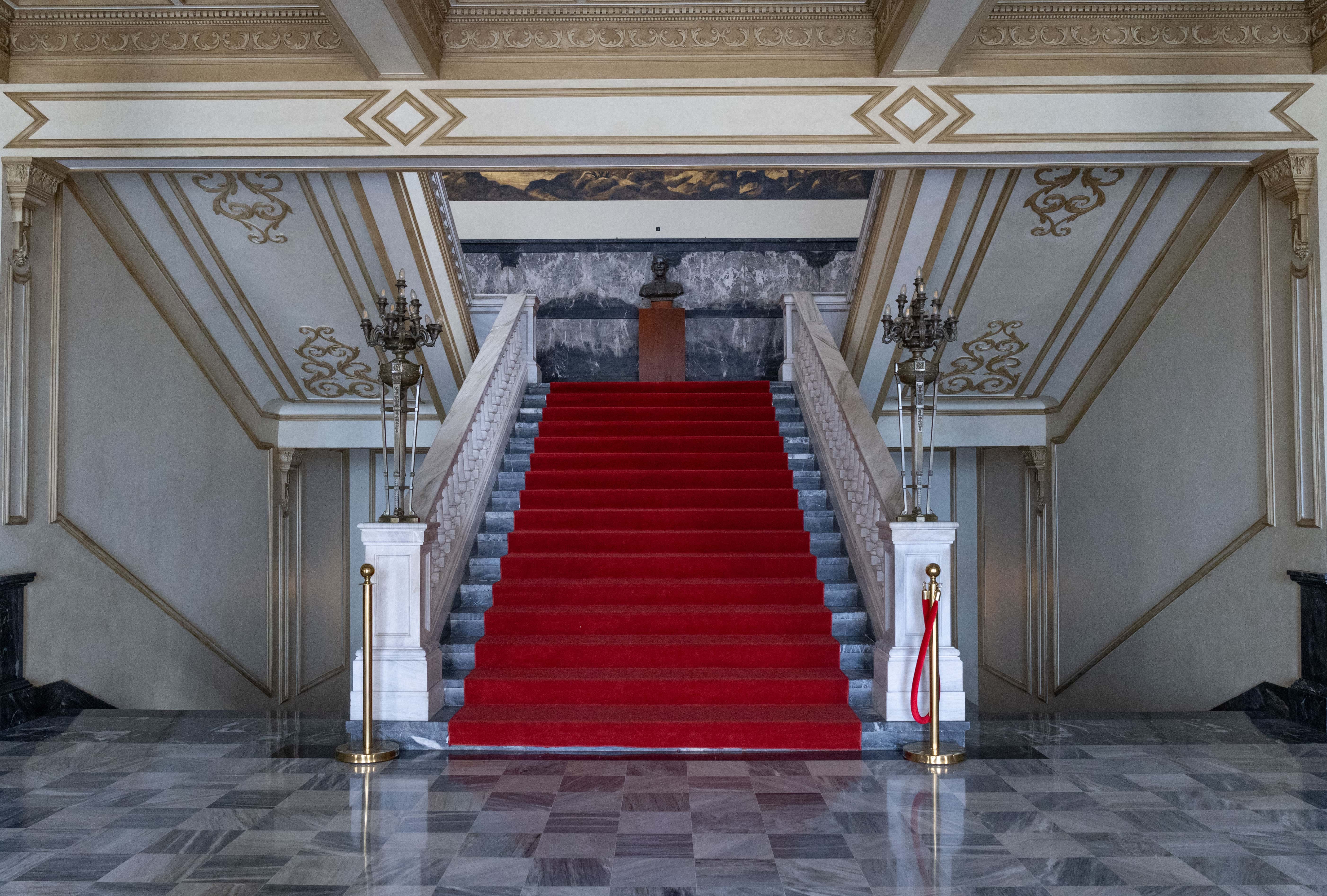
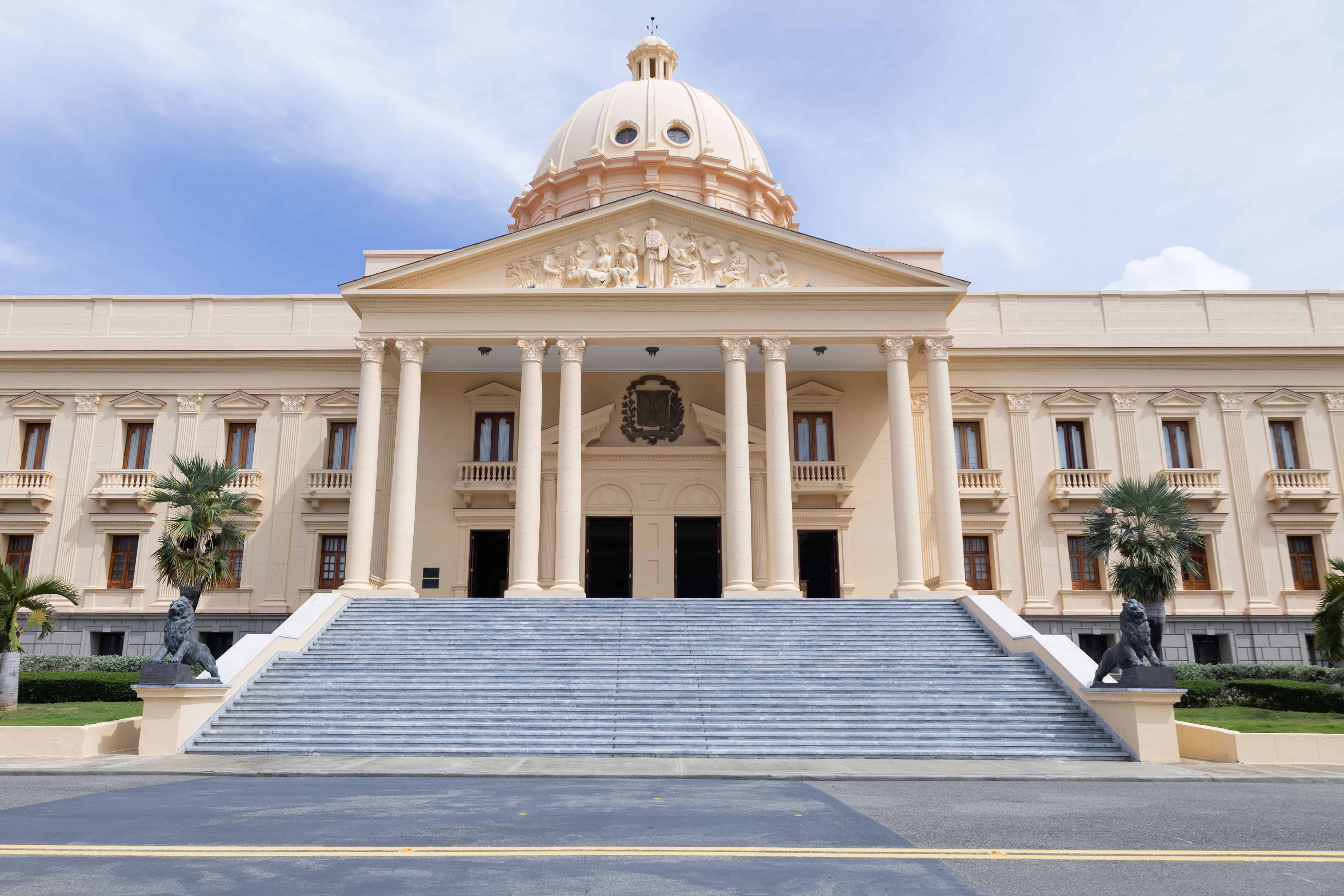
As you climb the steps of the National Palace, you're not only impressed by its imposing neoclassical façade ; you also sense the symbolic weight of history, marked by the illustrious figures who have walked those same steps.
The wide staircase leads to a portico with tall Ionic columns supporting a triangular pediment that features relief sculptures with a message alluding to the Roman law principle dura lex, sed lex , which can be translated as "the law is harsh, but it is law."
Above the portico rises the great dome of the Executive headquarters , a structure 18 meters in diameter and 34 meters high that constitutes one of the main emblems of the iconography of public servants.
At both ends of the staircase are two statues of lions that appear to guard the entrance, and the surroundings are surrounded by palm trees and a garden that gives warmth to the official headquarters.
The mezzanine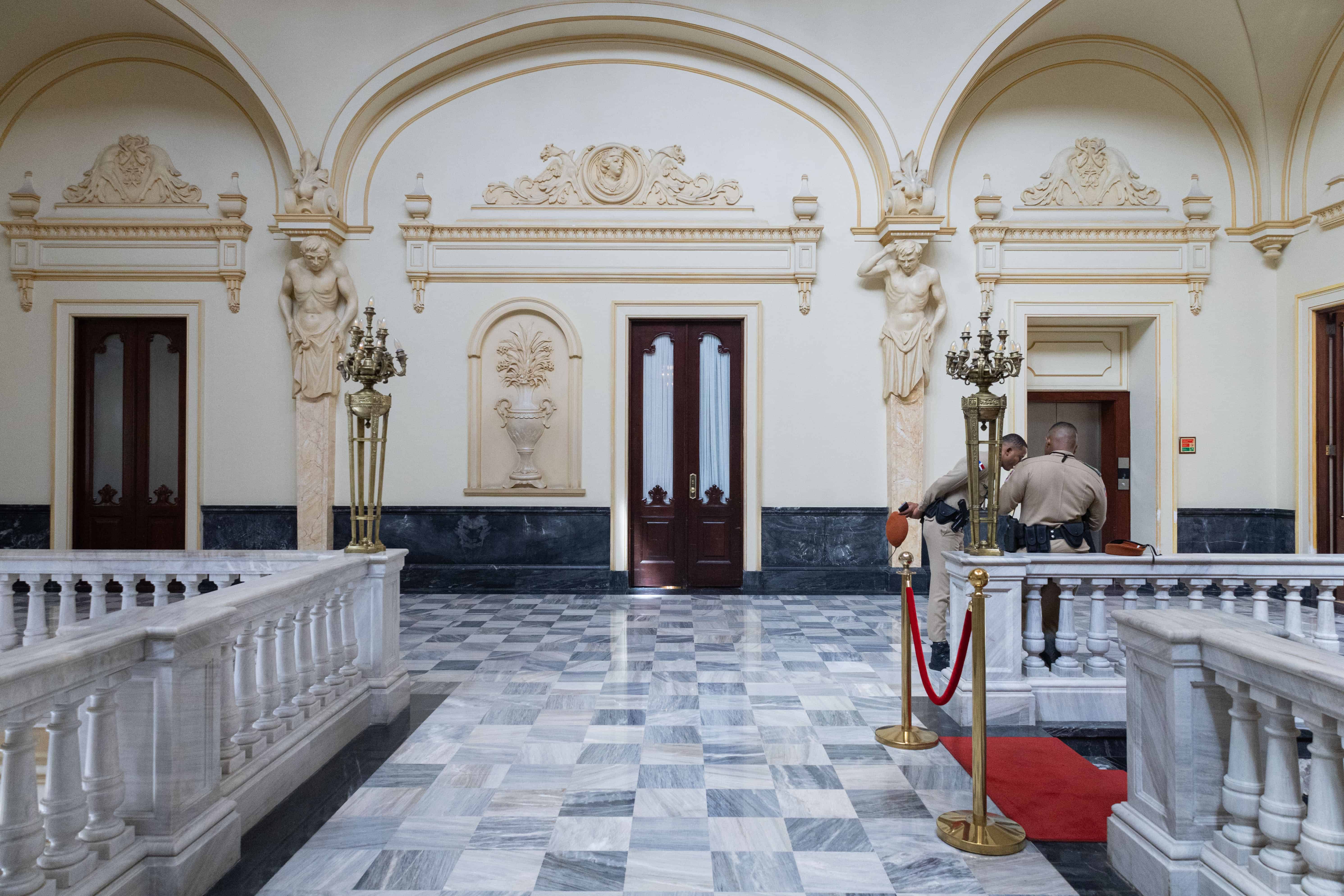
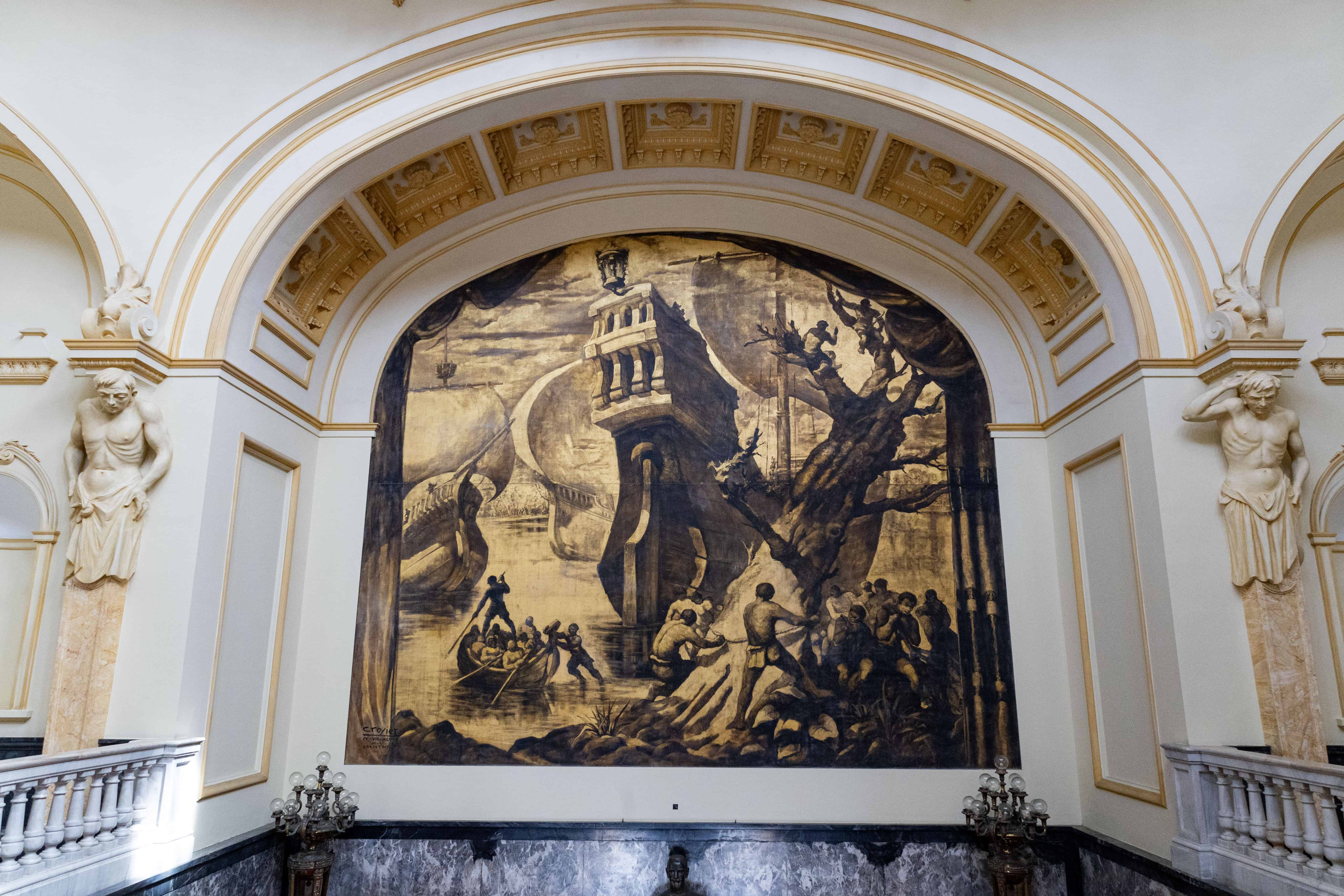
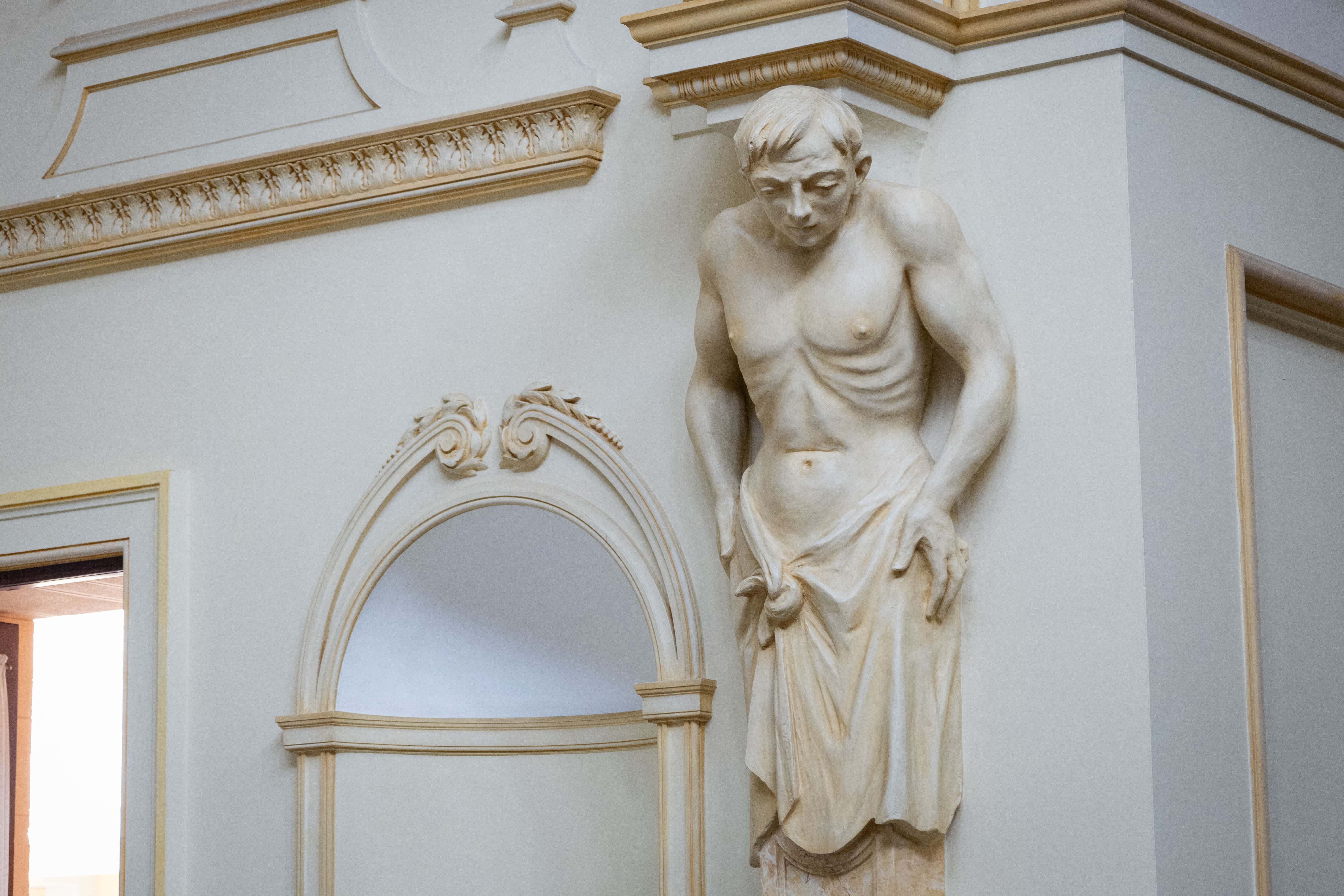
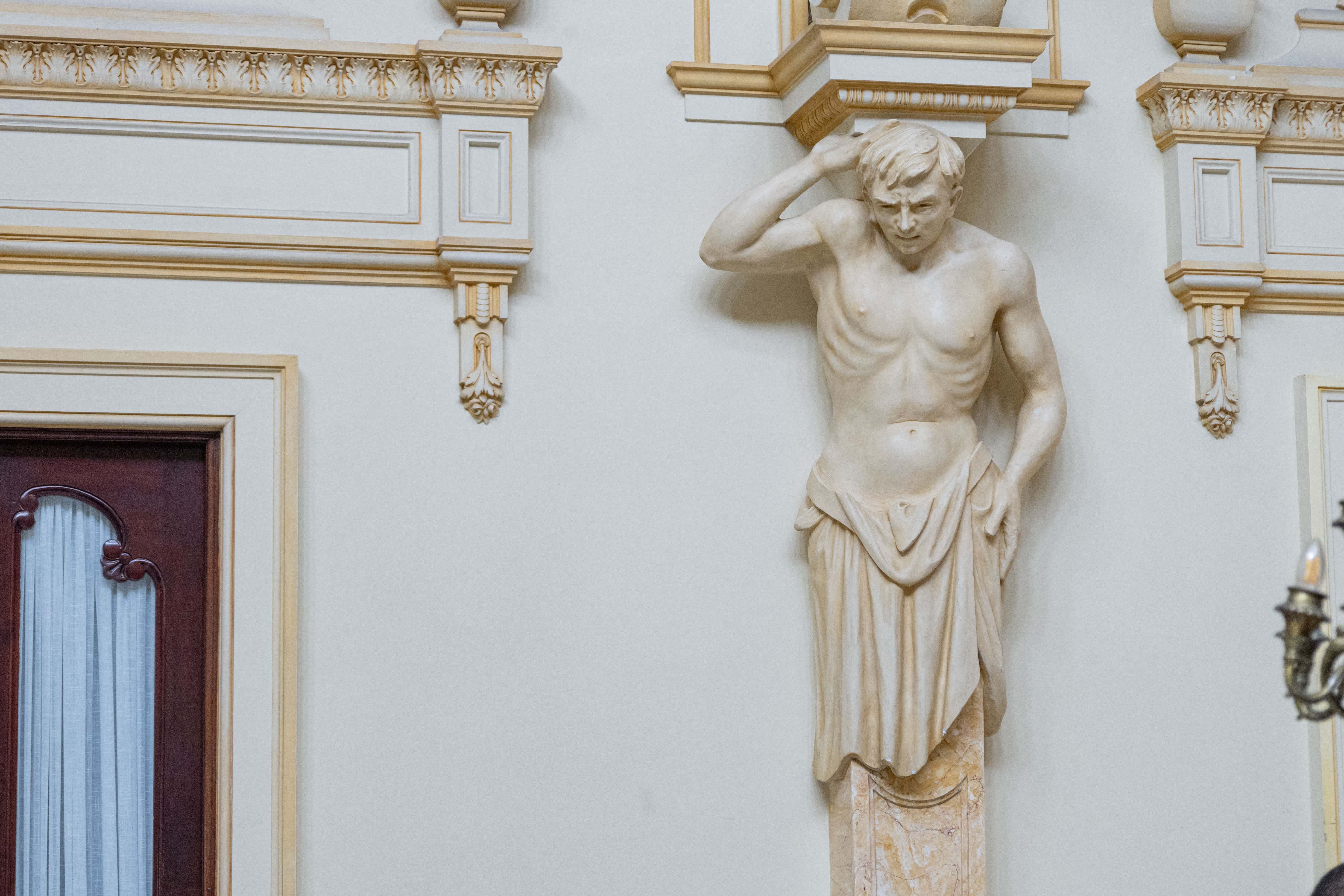
The third level houses the large reception halls, namely: the Ambassadors' Hall , the Caryatids' Hall , the Green Hall , the Bar Hall, the Main Dining Room and the President's private areas.
The Palace's mezzanine is located between the Ambassadors' and Caryatids' Halls. It features extensive neoclassical decoration, featuring a dome from which a large golden chandelier hangs; the atlantes supporting the columns; and the striking marble balustrade that serves as support and protection.
This section also features an impressive painting by Catalan artist Aurelio Oller Croisiet, from 1957, which alludes to Christopher Columbus's third voyage to Hispaniola .
Ambassadors' Hall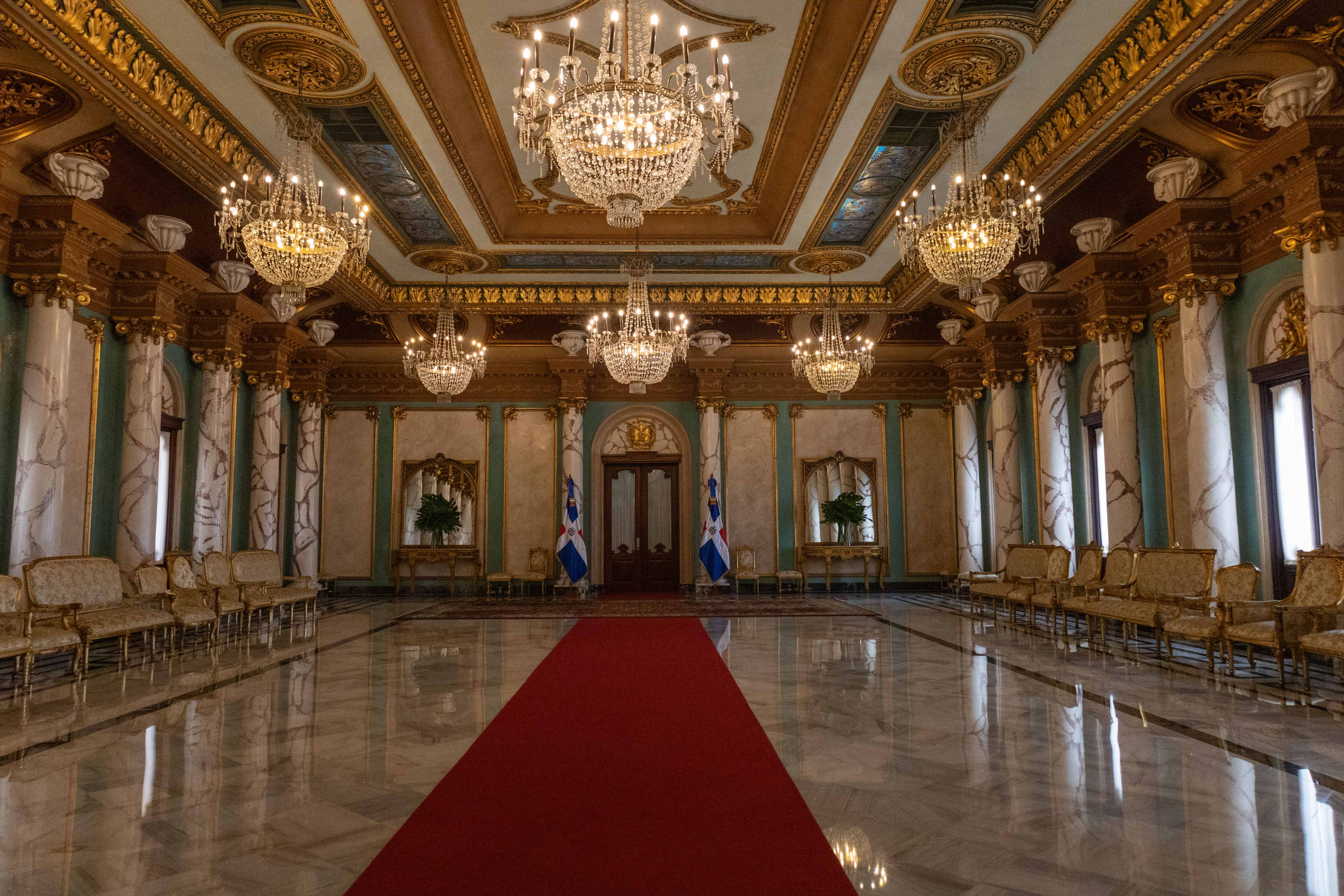
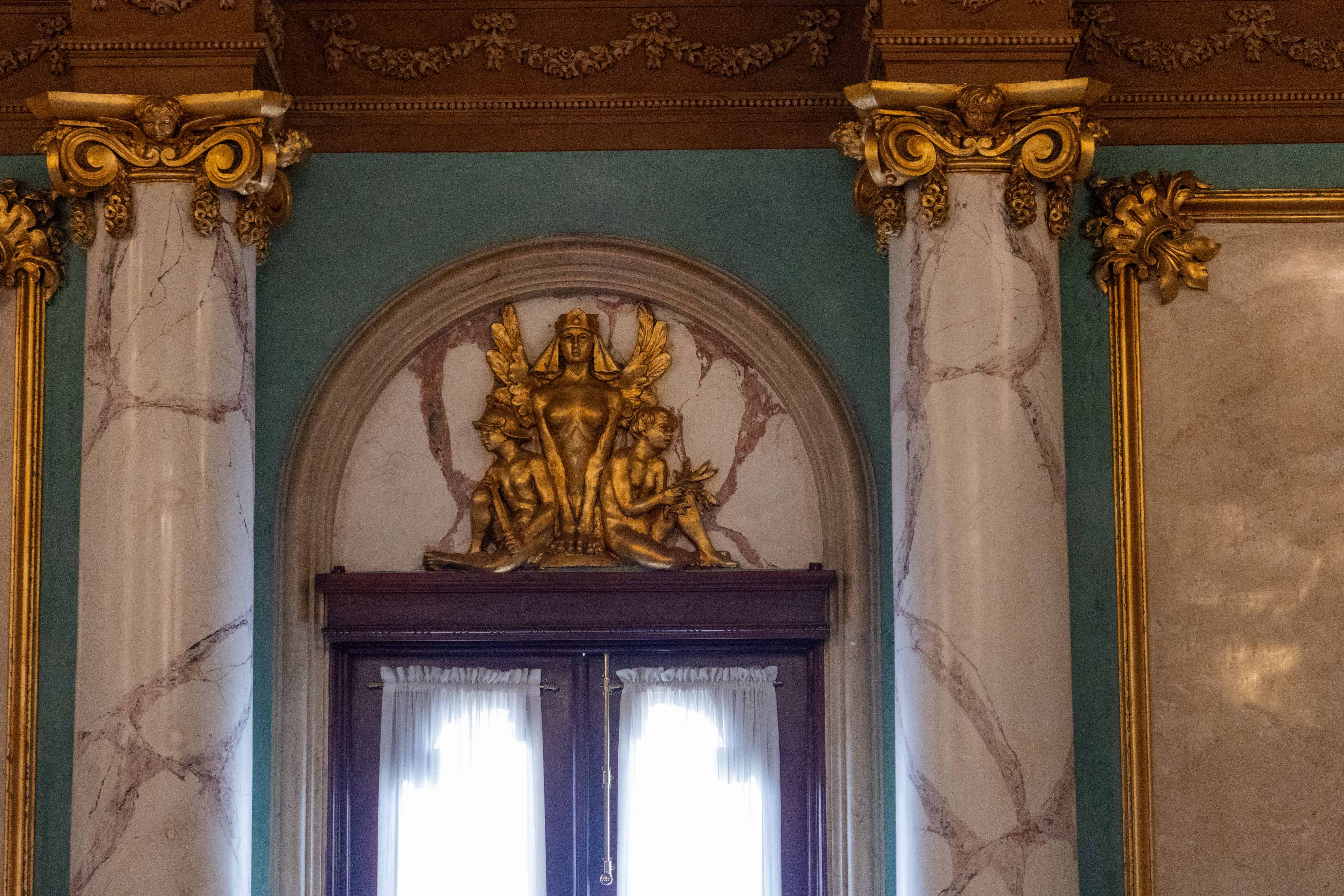

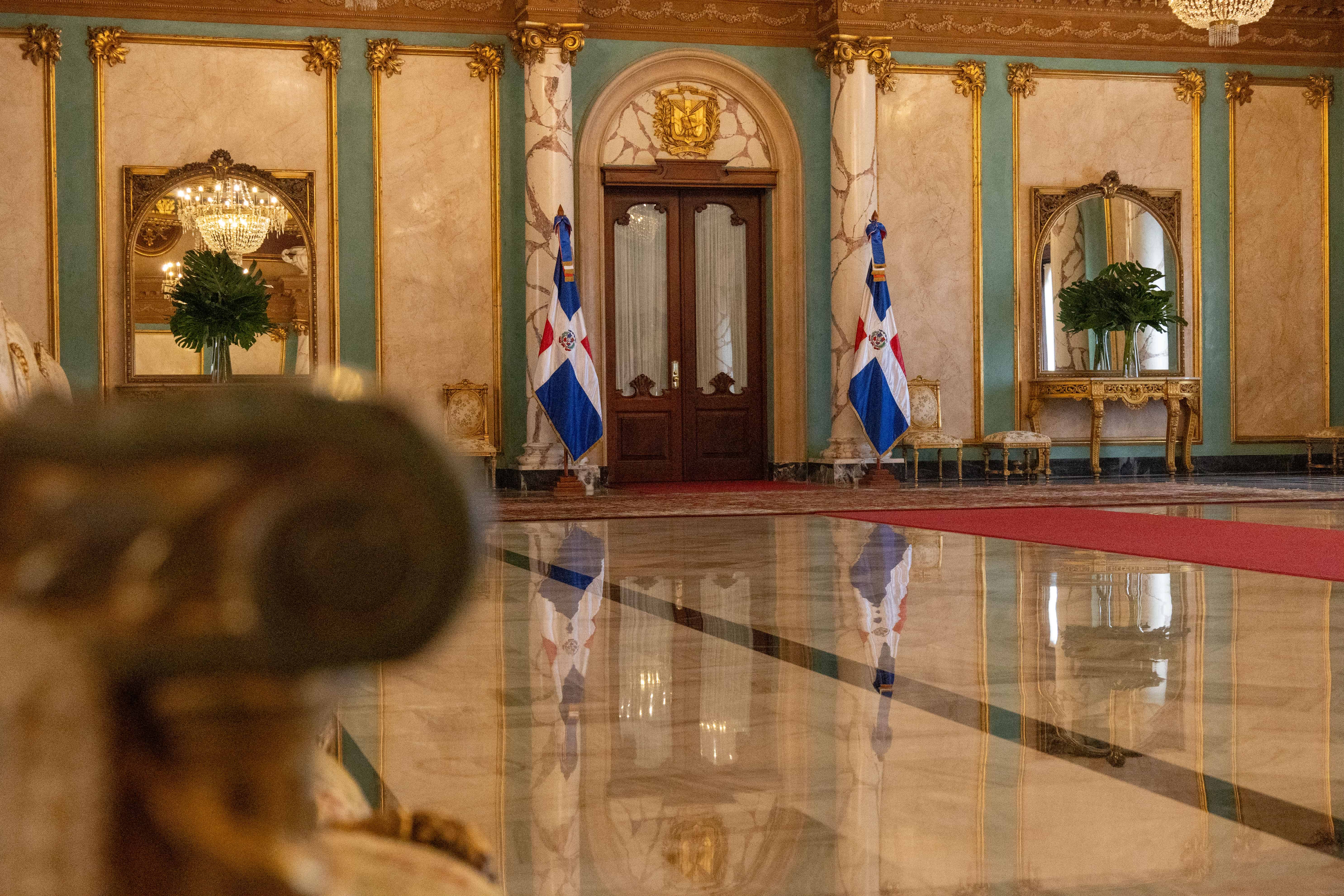
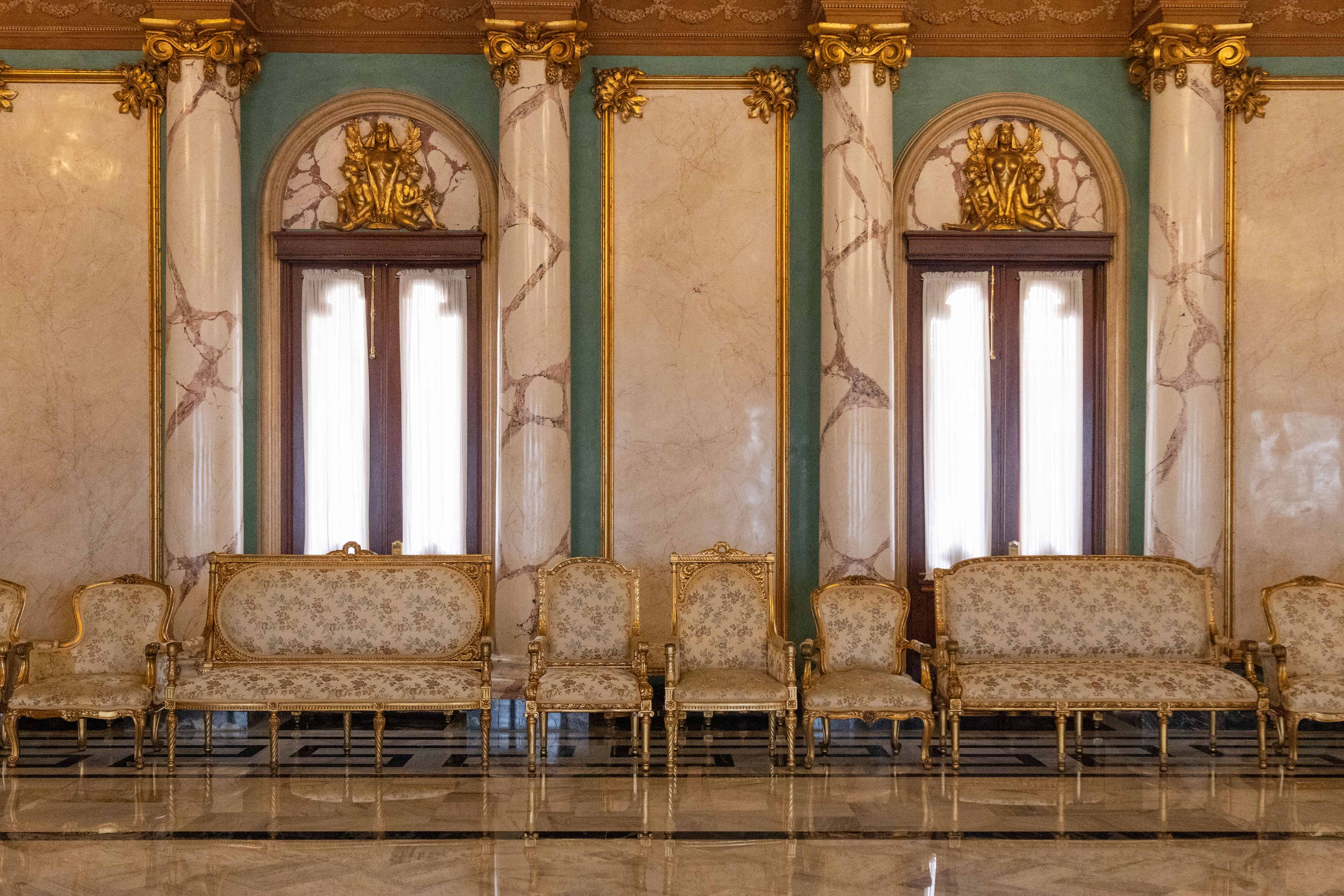

The Ambassadors' Hall is where the head of state receives the credentials of the diplomatic corps accredited in the country. It is also used to receive high-ranking dignitaries and officials, as well as to hold ceremonies and present the Duarte, Sánchez, and Mella Order of Merit , the highest distinction awarded by the Government of the Dominican Republic.
This room dazzles anyone who visits it for the first time. It is dominated by a red carpet that leads to a door guarded by Dominican flags.
The walls feature majestic white pillars with gold details, complemented by classic furnishings. The ceiling is one of the most beautiful pieces in the space: richly decorated with gold moldings and multiple crystal chandeliers.
Hall of the Caryatids
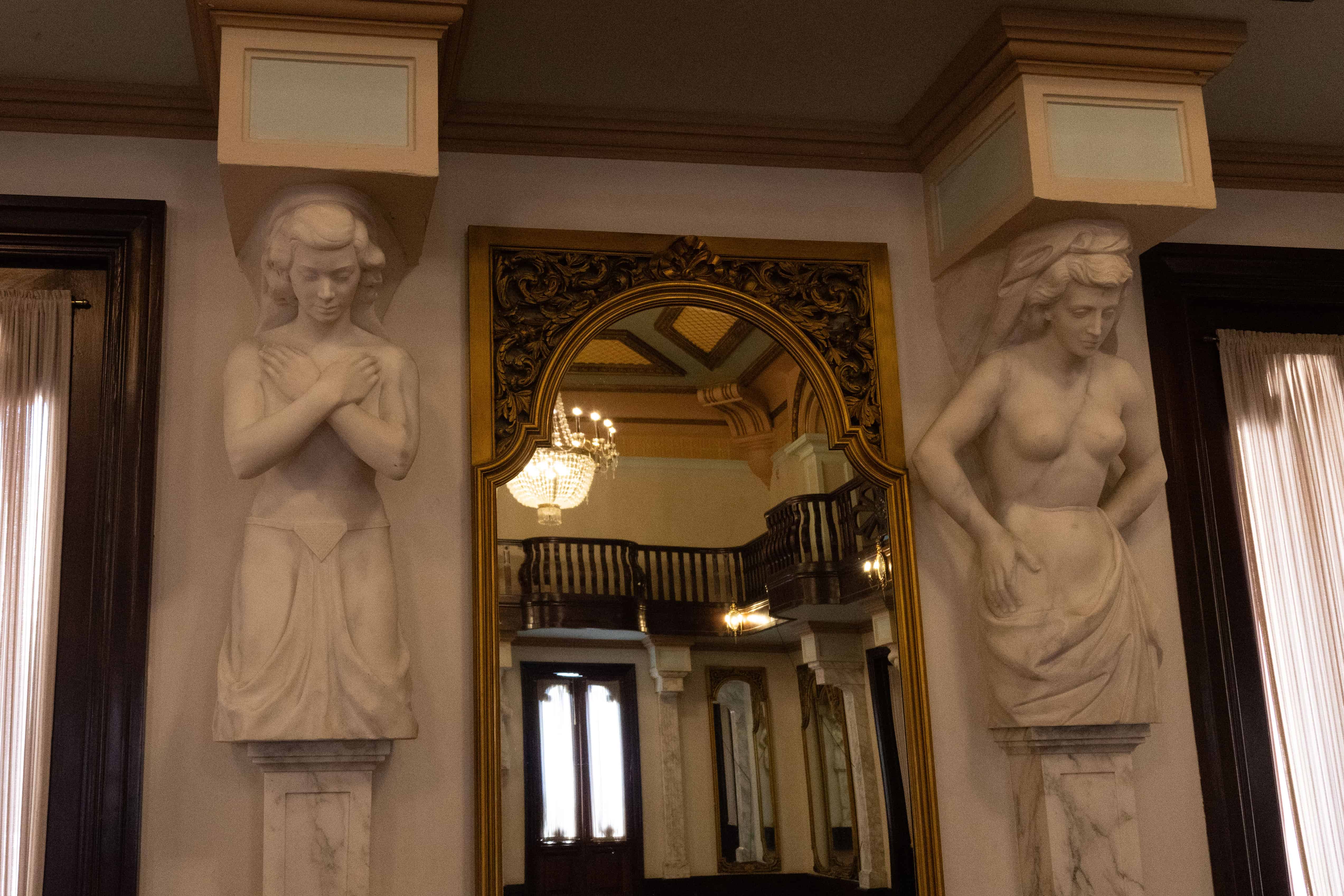
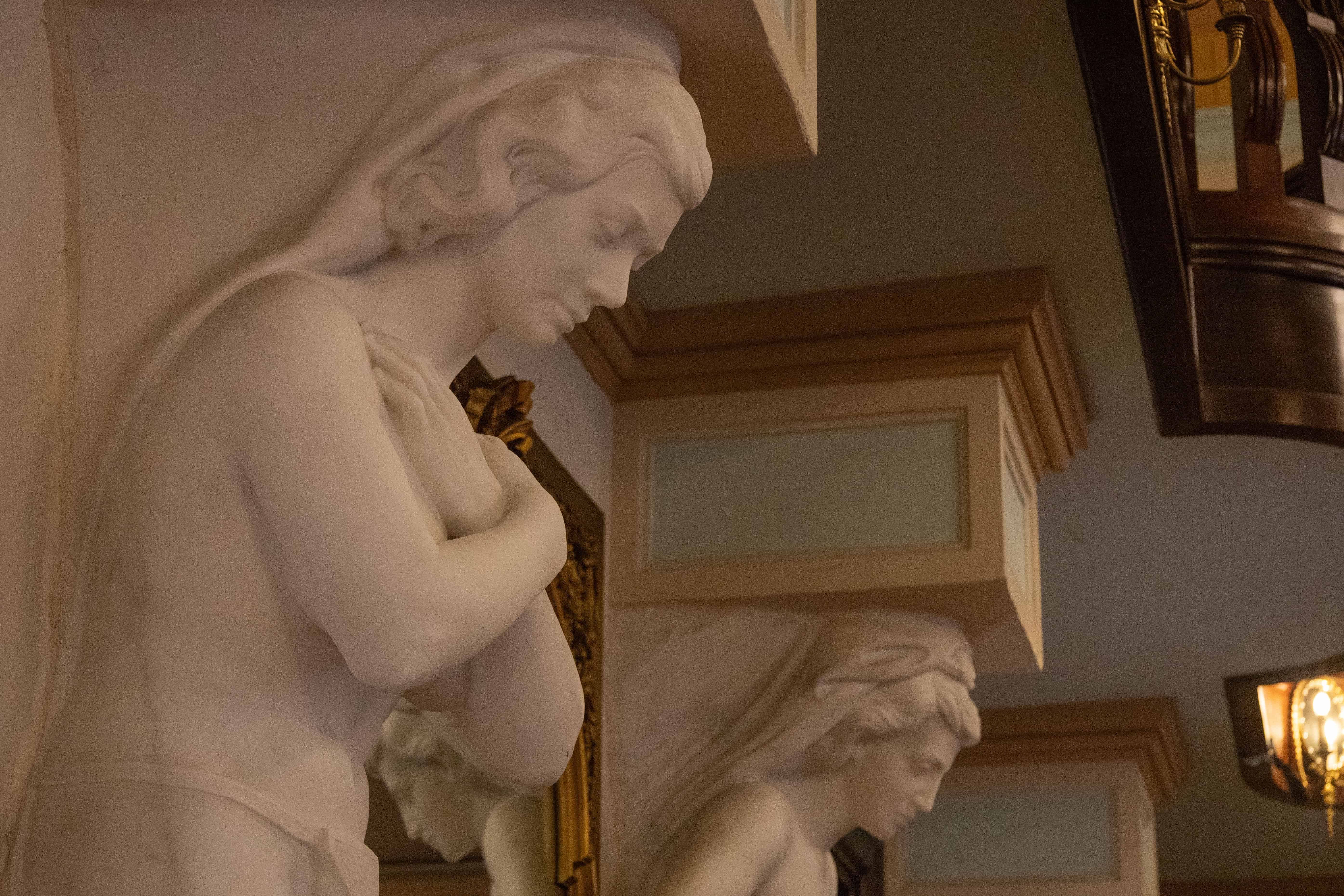
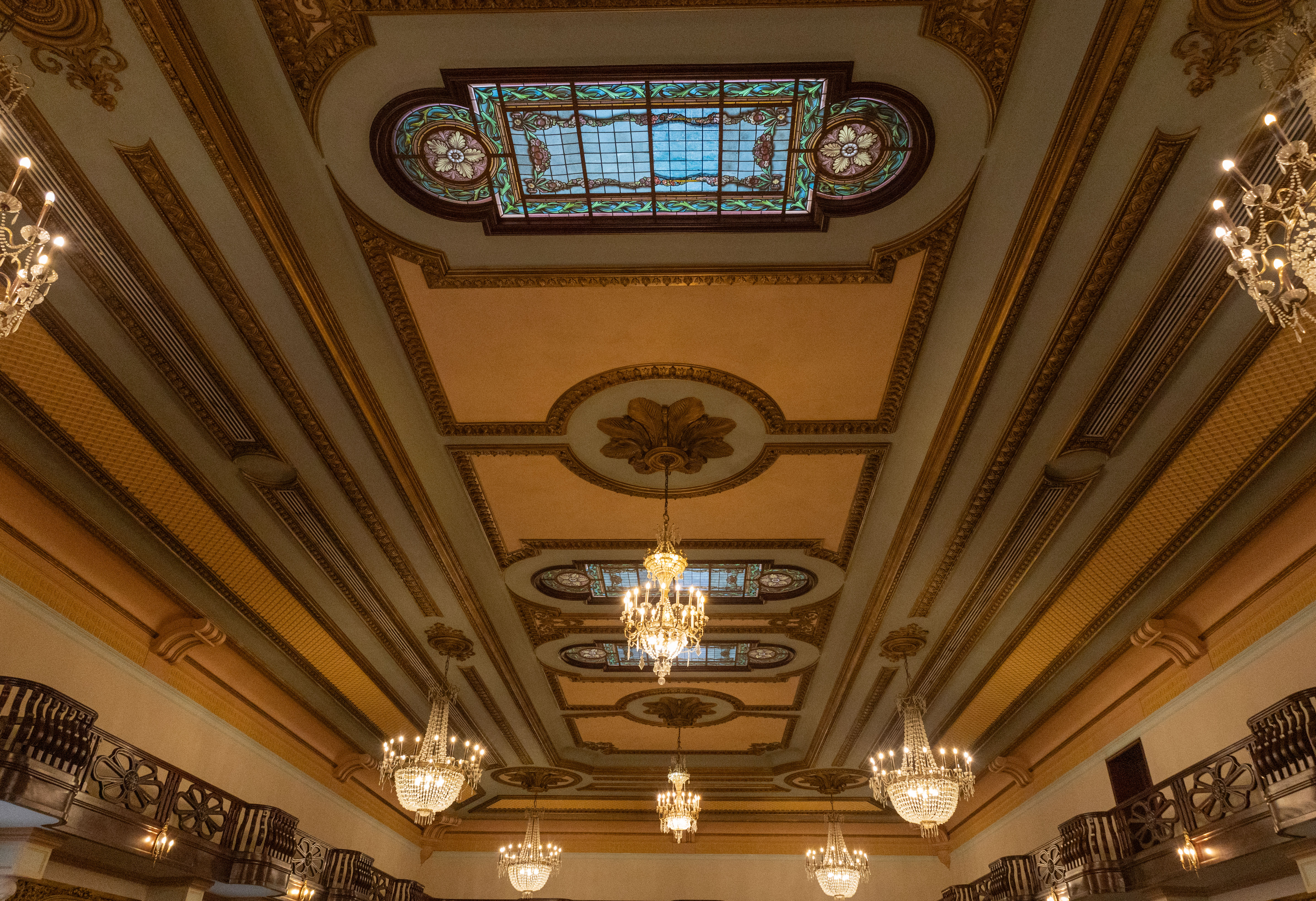
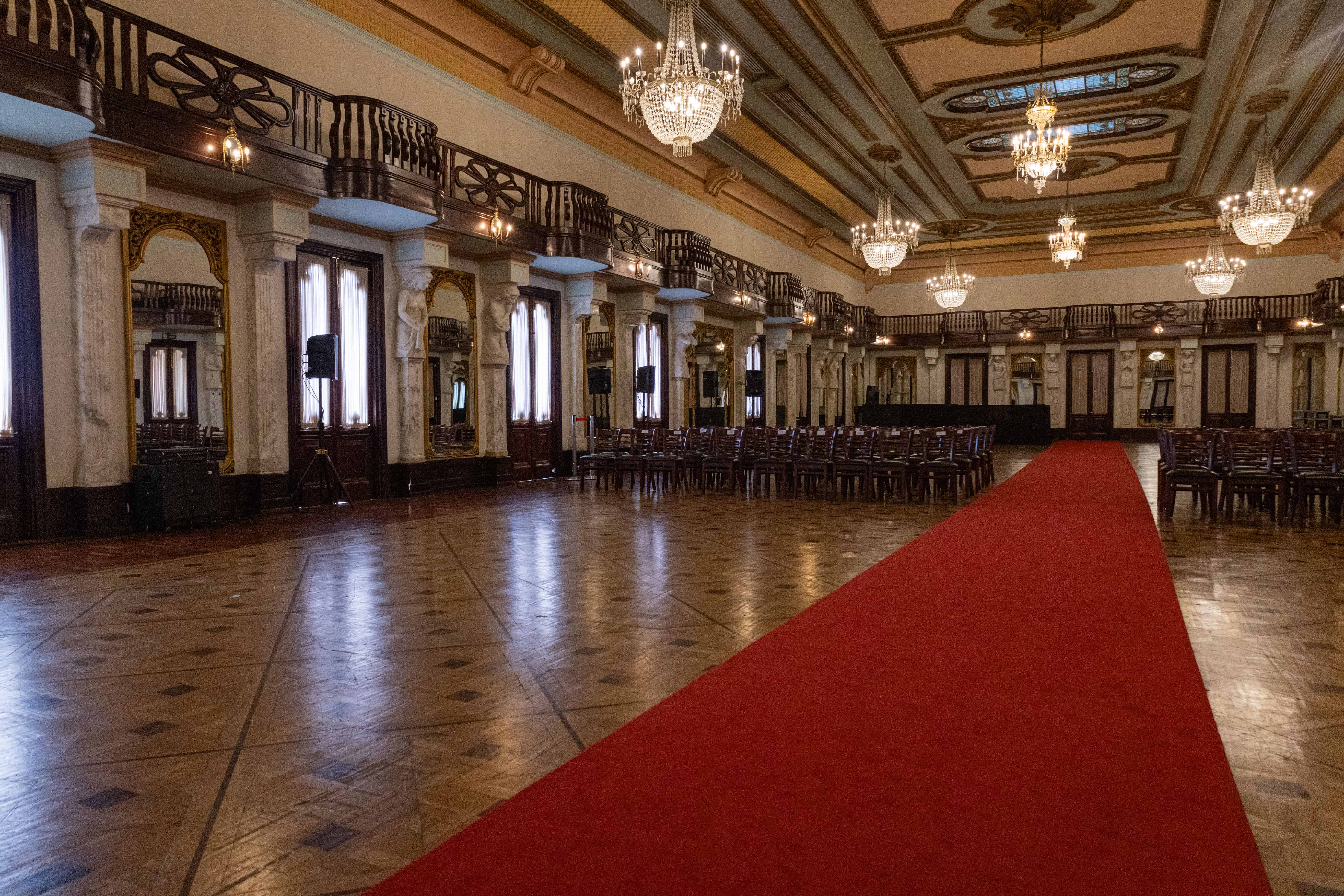
Opposite the Hall of Ambassadors is the Hall of the Caryatids , or Hall of Mirrors. Caryatids are the female equivalent of Atlantes: figures of women sculpted as columns or architectural supports.
This hall has had various uses over time. It is known that at its inauguration, it was known as the ballroom of dictator Rafael Leónidas Trujillo Molina. Subsequently, it has been used for celebrations, important events, and announcements. Currently, it is the venue for President Luis Abinader 's LA Semanal con la Prensa (The Weekly Press Conference) every Monday.
The room features a long red carpet in the center, and dark wood balconies with ornate railings can be seen on either side.
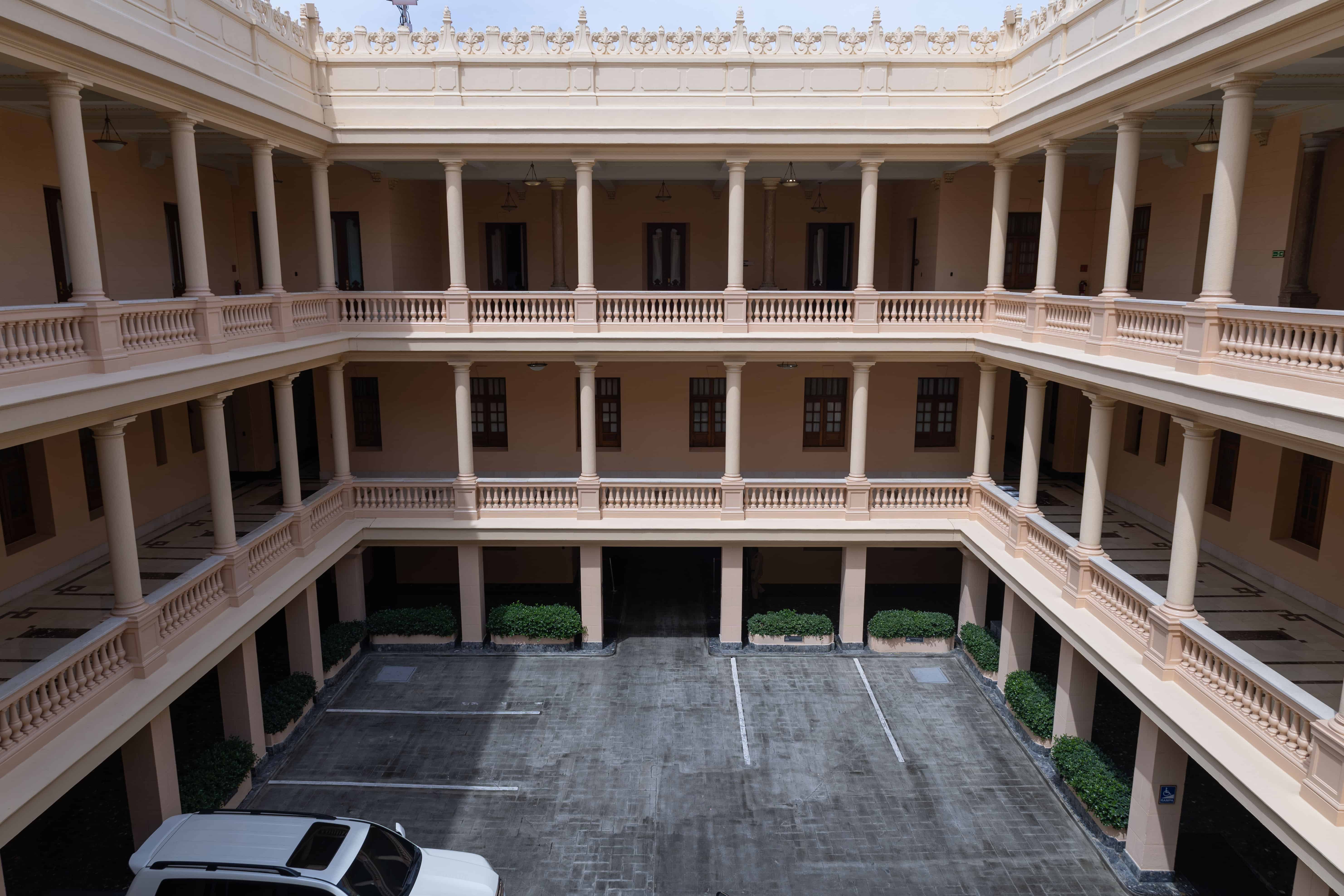

As you continue the tour, you can't help but feel the coral-colored feel of the corridors , which lead you to imagine the number of figures who must have walked through these same places.
Green Room
The next stop is the Green Room , designed as a space for small receptions and entertaining of distinguished figures. It is currently used as a meeting room and for lunches with deputy ministers and other officials.
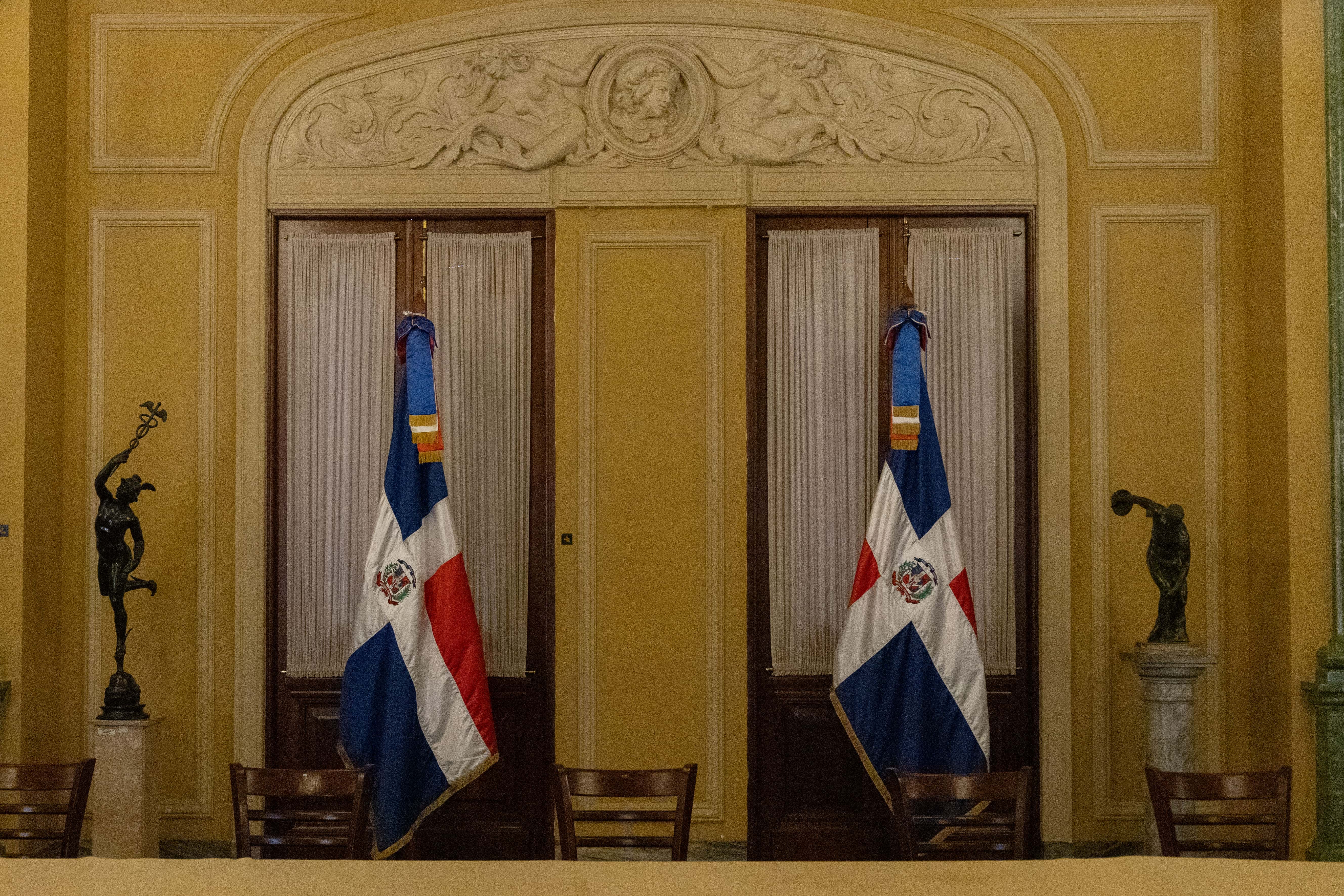
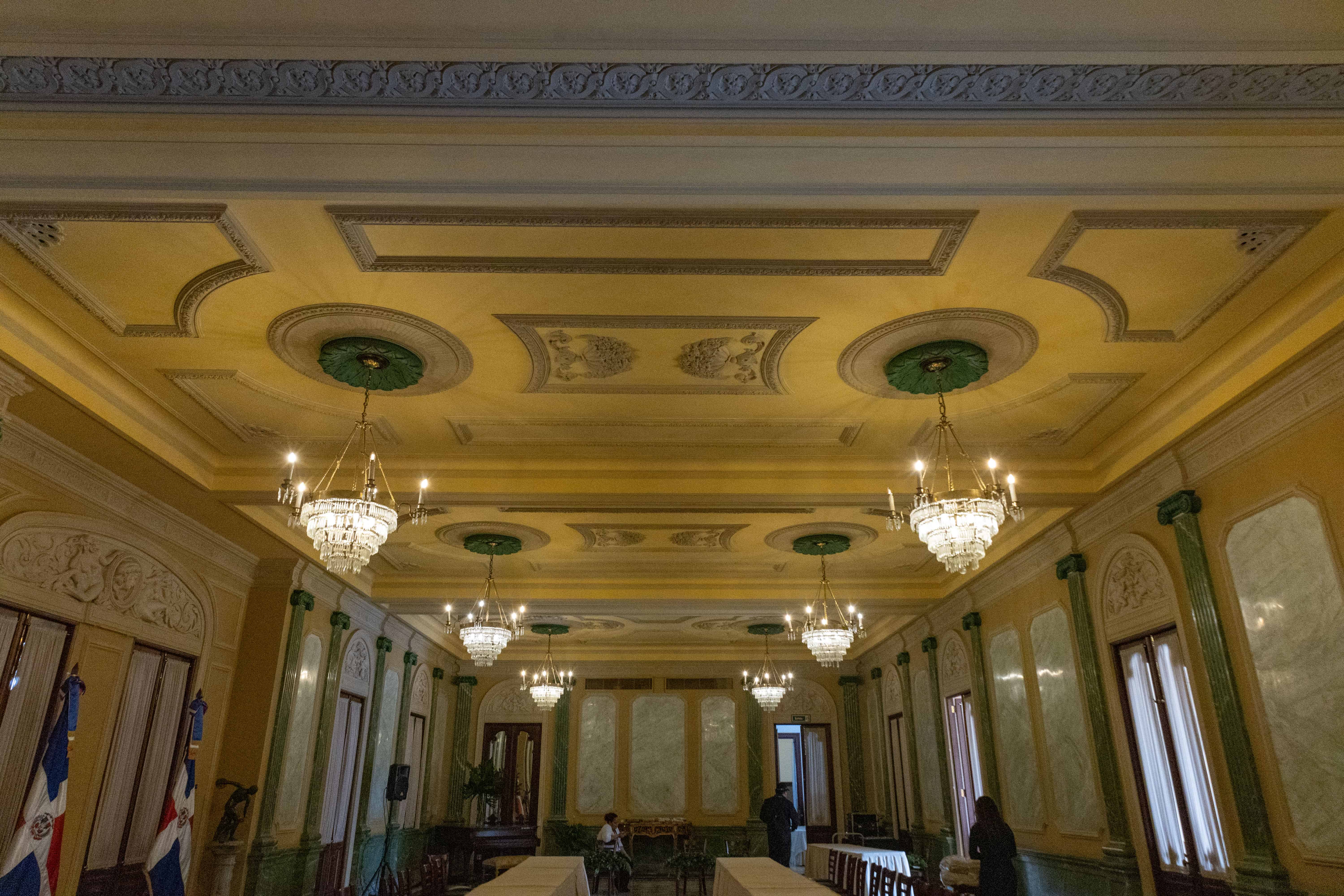
As its name suggests, its main feature is the green color that dominates the walls, with subtle shades of mint, emerald, and military. Among its most representative figures are the statues of Mercury (or Hermes in Greek mythology), the messenger god of commerce and eloquence, and a representation of the Discobolus of Myron, a symbol of athletics and discipline.
Banquet Hall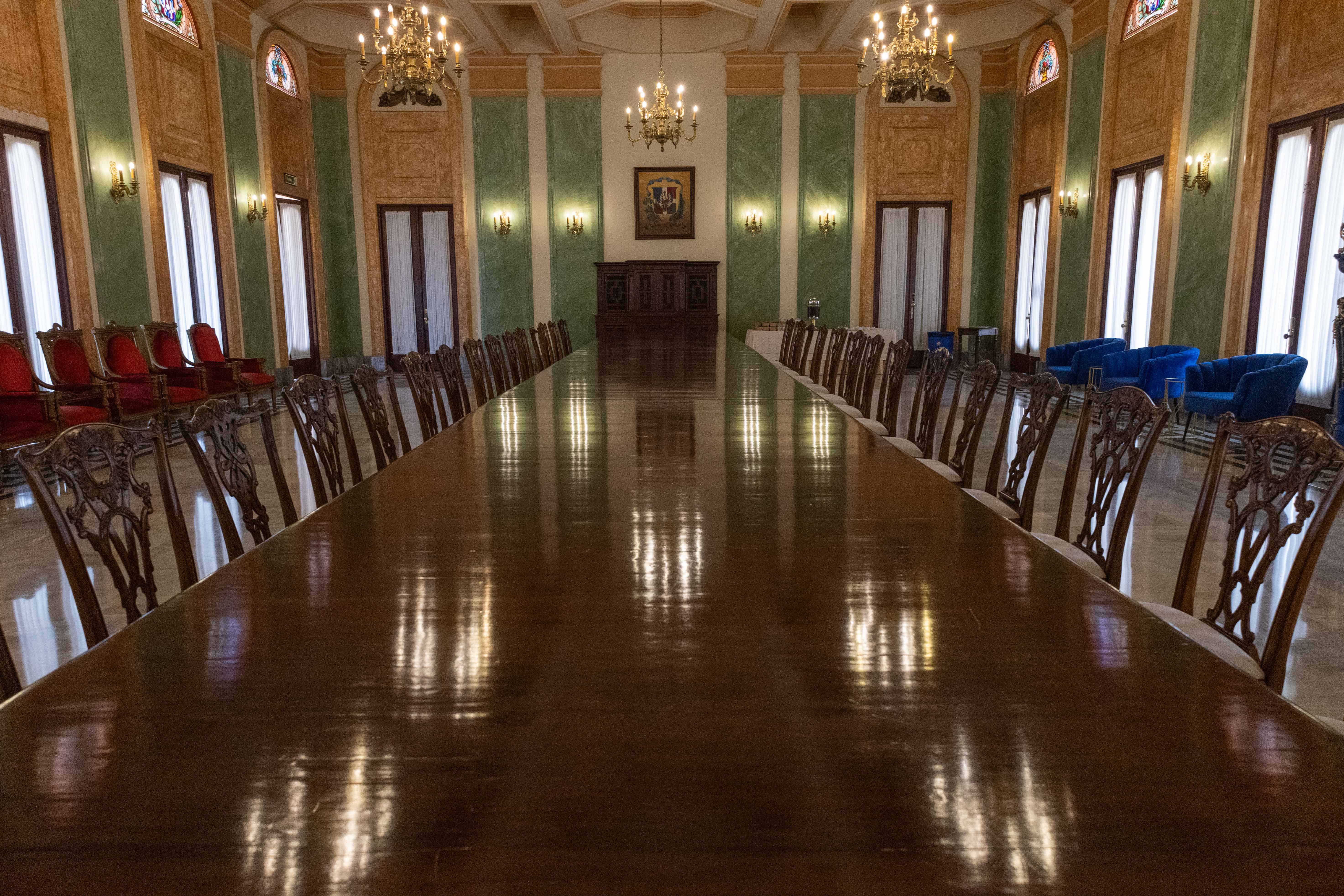
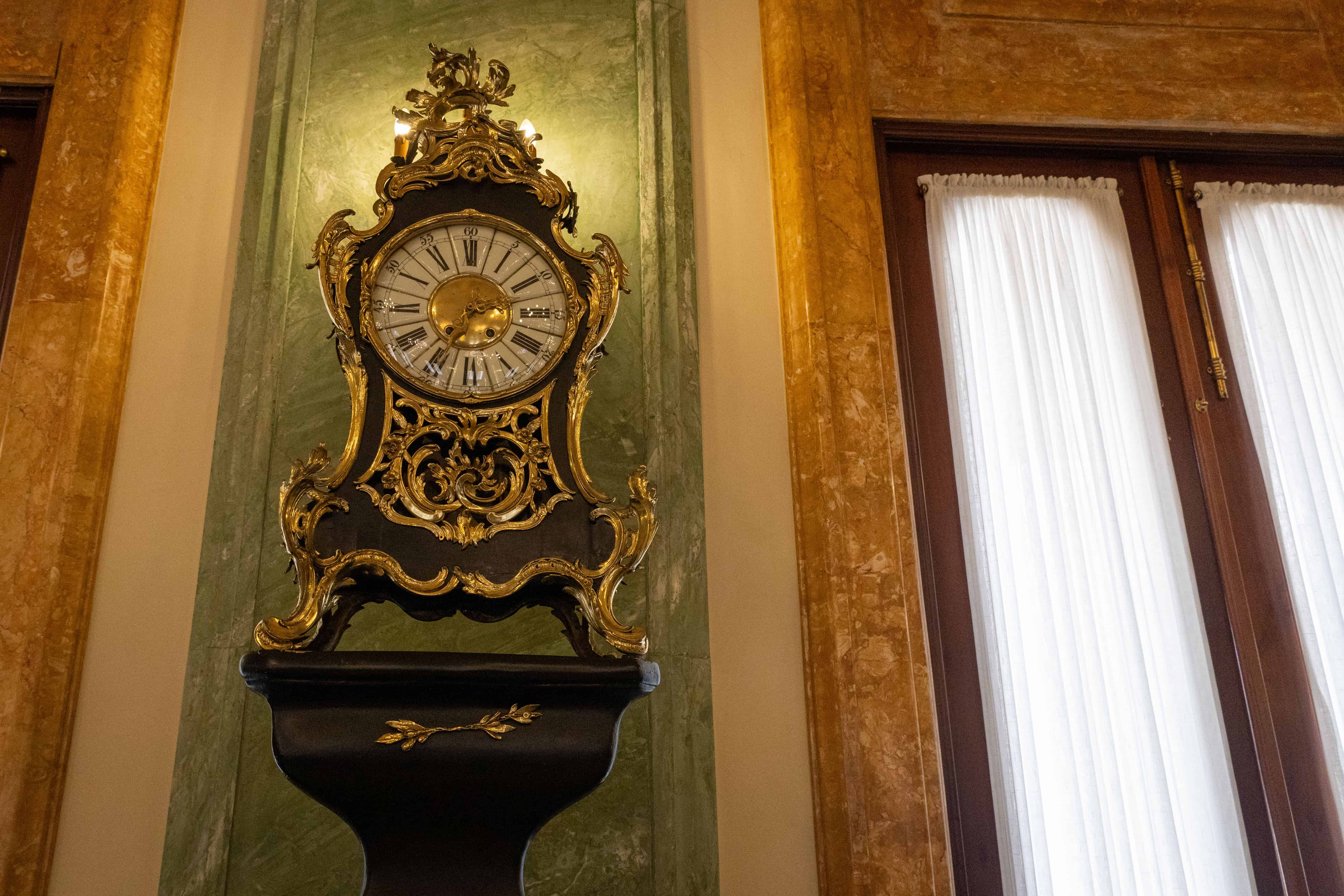
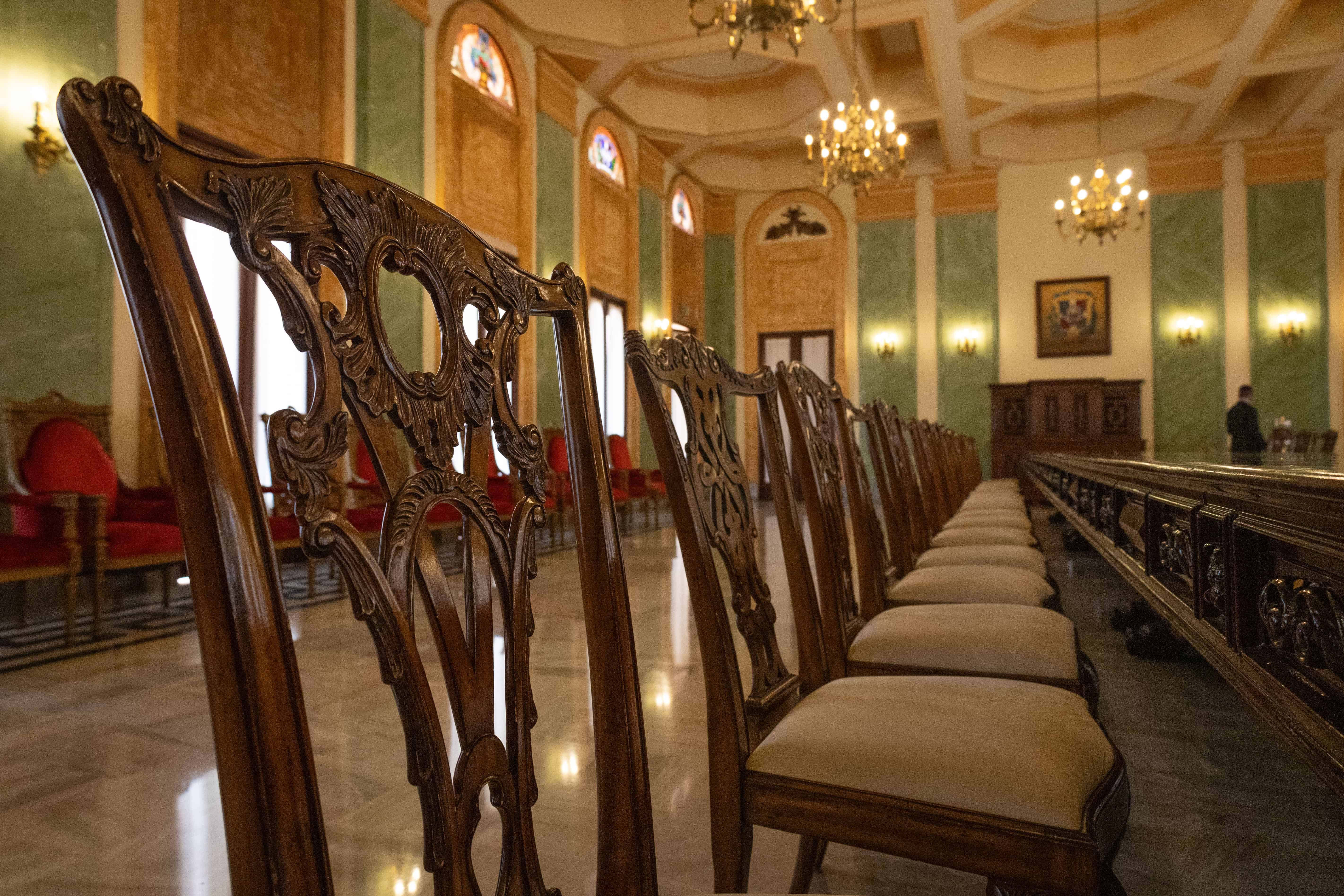
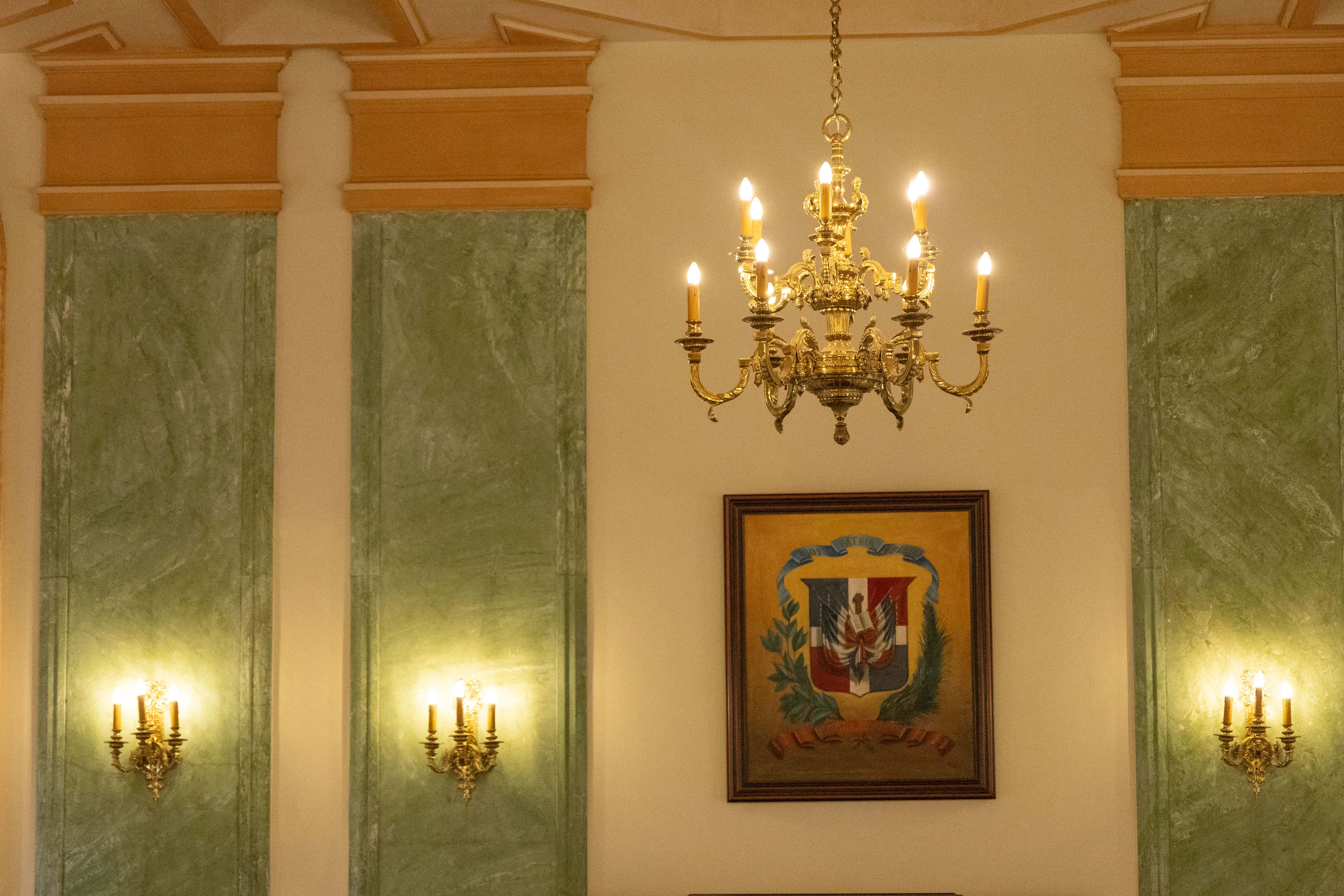
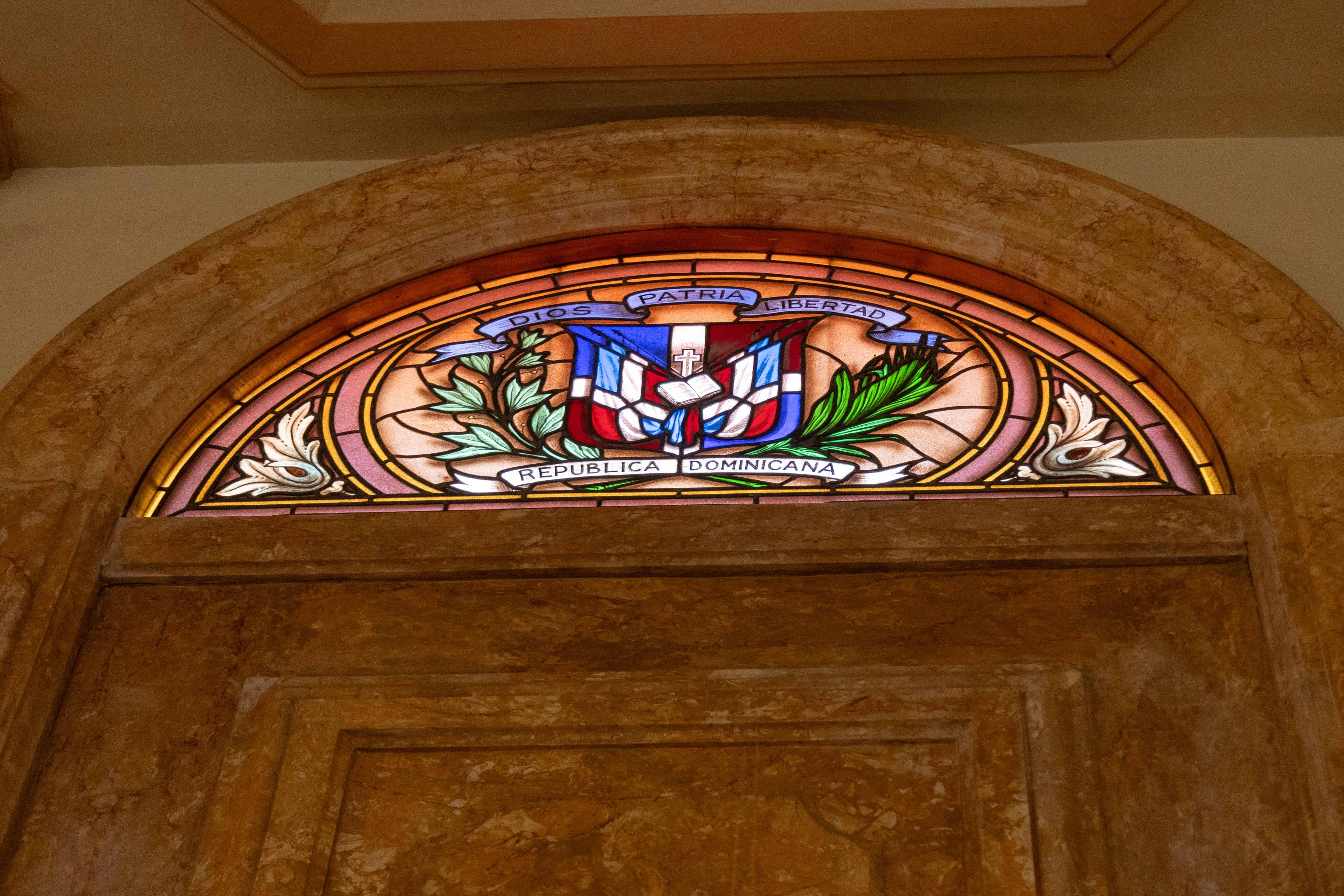
The last section of this tour, lasting about an hour and a half, was the Banquet Hall , a dining room where official lunches and dinners are held with special guests.
The central wooden table is the focal point. On either side are carved-back chairs, and the walls are painted in shades of green, gold, and white. Along the walls are more armchairs, some upholstered in shades of red and others in blue.
The National Palace offers historical and cultural tours that provide an opportunity to learn about the seat of the Dominican Republic's Executive Branch. Through this guided experience, visitors will learn about its history, architecture, interior layout, and the most emblematic rooms that form part of this national symbol.
This service is open to Dominican citizens and foreign visitors over the age of 9, whether individuals or groups. It is available to families, educational centers, businesses, and other organizations. Minors must be accompanied by a responsible adult.
Tours are held on Tuesdays, Wednesdays, and Thursdays, at two times: 10:00 a.m. and 3:00 p.m. To schedule a visit or request information, interested parties must complete the service request form via the website (www.palacionacional.gob.do), mobile app, and/or submit a document through the Correspondence Desk.
The Palace also has a modern virtual tour available on its website for the public's enjoyment.
![[object HTMLTextAreaElement]](https://resources.diariolibre.com/images/2025/09/13/28082025-recorrido-por-el-palacio-presidencial-dania-acevedo-jesus-68-d98e58bb.jpg)
The National Palace was conceived by Italian architect Guido D'Alessandro, who began plans in 1939 at the request of dictator Rafael Leónidas Trujillo Molina. Its detailed design took almost three years, and construction began on February 27, 1944, in commemoration of the centennial of the Republic. It was inaugurated on August 16, 1947, at an approximate cost of five million pesos, not including furnishings or land.
This 18,000-square-meter building, built on a 25,000-square-meter plot, stands out for its eclectic style with neoclassical, Baroque, and Renaissance influences. Its architecture integrates domestic and imported materials such as marble, mahogany, bronze, and iron.
Throughout its history, the National Palace has hosted meetings with prominent international figures, including Pope John Paul II in 1992; Richard Nixon , Vice President of the United States in 1955; and Juscelino Kubistchek, President of Brazil, for the inauguration of the Peace and Brotherhood Fair of the Free World in 1955.
Other notable figures who have been received at the National Palace include Juan Carlos I and Sofía , King and Queen of Spain; Carlos Andrés Pérez, former President of Venezuela; Jimmy Carter, former President of the United States; and Prince Felipe de Borbón, current King of Spain.
Read more
TOPICS -
Diariolibre




